
 Introduction
Introduction
A car is like a second home to many, spending hours of our lives driving from place to place. No one wants to stay in a dirty home, so that should be the same mindset when it comes to your car. Having a cleaning routine is definitely the best way to maintain your vehicle's cleanliness but keeping to the plan might be a struggle for some. Therefore, we’ve handpicked 20 golden rules you should abide by if you want to want your car spotless without doing much work:
1. Care for MatsThe first rule of keeping your car clean is to always have car mats. If you’re looking to purchase good-quality ones, check out this car mat company! What’s more, we also encourage everyone to clean their car mats regularly. First, vacuum the mats to remove debris and spray some stain remover, then put them in warm soapy water.
2. No food in the carThe convenience of eating inside the car does sound tempting but refraining from doing so can save you hours of clearing up the mess. Not to mention the food crumbs that attract pests, or the food odour that lingers in your car will now be extra problems you have to settle. Hence, we believe that prevention is better than cure -- save that burger until you’ve reached your destination!
3. Clean up immediatelyThe best policy is still to refrain from eating when you are in the car. But if that fails and something spills, the next best thing is to clean it up as soon as possible.
4. Prepare a rubbish bagHaving a dedicated rubbish bag in your car gives you somewhere to dispose of any unexpected leaking items before the mess gets worse.
5. Beware of your footwearIt’s a good practice to give your footwear a cleanliness check before stepping into your car. That pair of shoes might have saved you from wet grass but the dirt it brings along will surely be a hassle to get rid of. If you are bound to get your shoes dirty, consider purchasing rubber floor mats to collect all the dirt.
6. Clear the airA dirty cabin air filter is usually the main culprit when it comes to bad smells in the car. We encourage you to bring it for servicing regularly to remove the junk hiding in the filter. Alternatively, running your car’s air conditioner on full speed at max heat for several minutes once every 2 weeks helps to dry out all the condensation water at the bottom of the air conditioner unit to prevent odour.
Aside from the filter, remember to pay some attention to your air conditioner vents too! Bring a small handheld vacuum that can suck up all the dust and dirt. For narrow spaces, we suggest using a paintbrush or foam brush to clean.
7. Pay attention to your cupholdersWhen was the last time you checked up on your cupholders? They have been withstanding the random spills, condensation and the occasional carelessness and it's time we give them a good wipe. Dip a cotton bud into a mixture of water and cleaning solution to scrub the gunk off!
8. Wipe & polishIt is a good practice to keep some cleaning wipes in your car, so you can give the vehicle a well-deserved wipe whenever you want. Try using upholstery wipes as they contain light condition agents, helping to preserve your surfaces in pristine condition
9. Cleaning vinylMagic erasers will be your best friend when removing stubborn, dried-on dirt from vinyl and leather surfaces. For a more serious case of dirt, you can scrub them with a toothbrush after dipping them into diluted dish soap.
10. Cushion makeoverCushion tends to collect dust, crumbs and other random things hidden within the seams of your seats. By taking a fine-bristled brush or toothbrush, get these little bits out for a smoother vacuuming process
11. Polish the dashA clean rag with a little bit of baby oil does the job to make your dashboard look as dashing as before. Try this trick on leather surfaces too
12. Wash your seatsAll you need is a diluted all-purpose cleaner, a scrub brush or washcloth and a lot of arm strength to do this job. Remember to use a white or un-dyed washcloth to prevent colours from bleeding into your upholstery. Another alternative will be to hire a wet upholstery cleaner to help you get the job done.
13. Travelling with furry friendsLaying down blankets or a pet hammock across your backseat helps to avoid the pet furs from sticking to your upholstery. Additionally, it helps to bring a distinct pet smell along with it.
14. Windscreen wipersStreaking windscreen wipers can cause a lot of headache. If it’s too early to replace them, try using rubbing alcohol and paper towels to wipe them down and that should help.
15. No more cloudy headlightsToothpaste is a mild abrasive, so dirt and grime come off easily. Squeeze a tiny bit of it onto a clean cloth then scrub the headlights for a cleared up headlights.
16. Remember the top of the windowsStart the window cleaning process with it rolled down halfway so as to clean the top parts of the window that often gets neglected.
17. Wax the car up Waxing your car helps to create a barrier between the painted layer and airborne contaminants.Not just that, this extra layer helps to protect it from damage and also fill in shallow scratches. Additionally, friction between the car and debris is further reduced and concurrently prevents paint chips from coming out.
18. Dry your GrilleDead and dried bugs have always been a headache to remove from the car’s bumper and grille. By wetting everyday dryer sheets with some warm water, it will remove these pests easily (and better than those commercial bug removal products)
19. A regular washing scheduleThe road to a clean car can be achieved by sticking to a consistent routine to wash your car. Whether you are washing it yourself or paying for a car wash, having a schedule ensures that your car will never be dirty again.
20. Make your own air freshenerSave some coins by making your very own non-toxic air freshener. In a small mason jar, fill a quarter of it with baking soda then add five drops of essential oil of your choice. Once you’re done, cover the jar with a breathable fabric (e.g. lace) then screw the lid ring and give it a good shake. This homemade air freshener should last you six weeks or so.
ConclusionKeeping your car clean from gunk is actually not a difficult task. In fact, it's the small things (e.g. wiping surfaces when you have the time) that plays a big difference. By keeping these 20 golden rules in mind, you can also pick up 20 crucial and useful habits to help keep the car spotless.
How To Clean And Maintain Car Floor Mats General 11-Apr-2022 Introduction
Introduction
Owning a car can make you feel like you’re on top of the world — you won’t have to rely on public transport, and are free from bus and train timings to travel wherever and whenever you please. On top of this, you can carry way more things along with you. However, despite all these perks, there are also a brand new set of responsibilities you have to shoulder.
Between making sure you have enough gas to getting the oil changed every couple of months, there are several things you need to keep in mind. The most difficult of these is caring for floor mats in your car. If ever you forget, you will be met with a gross and painful surprise to remind you to always do it the next time you step into your car. Floor mats can become grimy no matter how aggressively you clean them. They are the second dirtiest part of the car, only losing out to your vehicle’s exterior. Unfortunately, floor mats are a lot more tricky to clean, and even more daunting to maintain. If you haven’t gotten yourself a good-quality car mat, check out Simply Car Mats to find out more.
Should you have no idea where to even begin, fret not –– our guide is just for you. Car washes have always been unnecessarily expensive, especially for the interior of the car. A good clean-up can burn a massive hole in your wallet, making you reconsider the perks of buying a car in the first place. Luckily for you, it’s not that hard to clean it yourself.
Step One: Clean Your CarBefore getting started on floor mats, you’re going to need to first clean up the car itself. It is always important to never neglect the rest of the car for the floor mats. This entails picking up any objects from the car floor and throwing away any garbage or useless trinkets. If you want to keep anything, be sure to keep them in special compartments dedicated to items to be kept in the car. Once the clutter’s gone, stains have now become much clearer, which makes the cleaning process significantly easier.
Step Two: Take The Mats OutThough this seems to be glaringly obvious, it is an unfortunate fact that many people tend to forget to remove their mats before cleaning them. Many parts of the car itself should never meet liquids of any kind, which means that any kind of mat washing should always take place outside the car. Also, cleaning on the inside can feel uncomfortable anyway.
Step Three: Get a Mat CleanerIf you’re a complete novice to cleaning floor mats, you might think a quick scrub might do the trick. However, you might want to think again. It takes a lot more than soaping and scrubbing to get squeaky clean mats. Enter mat cleaners –– they’re a lot better when it comes to cleaning delicate mats, but you’re going to need to take a look at the kind of floor mat you have before purchasing one. If it looks more like a rubber mat, some simple soap and vinegar will do the trick. On the contrary, cloth floors aren’t going to work with soap and vinegar, and hence you’re going to want to buy a proper cleaner.
Step Four: Buying BrushesNow equipped with the supplies you need, the only thing you’re missing is a trusty brush. It’s always a good idea to get a separate brush to clean your car’s mats since the mats are likely to need a good scrub before it’s well and truly clean.
You should always choose a brush that’s smaller and more comfortable to grip. Scrubbing floor mats –– especially cloth ones –– can use up a lot of effort, so you’re going to want a tool that’s comfortable to use. Additionally, a smaller brush can also help you with the harder-to-reach areas.
Step Five: Carpet Cleaning (Cloth)It’s time to get into the thick of it. Cleaning your carpet is going to take more finesse than with a rubber mat. Other than being careful, you’re also going to need to make sure you have the right tools and supplies. Here’s how you can go about it.
First, you’re going to need to take out the mats to avoid damage to the other parts of the car and lay them out on a flat surface.
Next, you’re going to need to vacuum both sides of the mat. While crumbs and dust are the least of your worries, it can be incredibly frustrating to get them out of the carpets. A little vacuuming can save you a ton of effort, as it helps you better focus on the real issue at hand –– removing those stubborn stains.
Thirdly, it’s time to bust out the carpet cleaning solution and use it to remove any pungent odors. Use it sparingly; you don’t need to drench your carpet just for odor control! If you don’t have an appropriate cleaning solution, you can always make do with white vinegar instead of carpet cleaner.
After applying the cleaning solution onto the carpet, you will need to brush off the salt and stains residue. It is important to do this gently so as to not damage the mat itself. Despite this, you will need to brush it thoroughly to ensure all the stains are gone.
Finally, you will need to wash the carpet with a high-pressure nozzle to hose out the stains and the solution. Although it’s not mandatory, we recommend using this type of nozzle as it can really help with the more stubborn stains.
Step Six: Carpet Cleaning (Rubber)Unlike cotton mats, rubber mats are considerably easier to clean and take way less effort doing so. This is because rubber mats are waterproof, so stains and salt residue are left on the surface level, where they can be easily removed. Here’s how you can do so!
First, begin by removing any external debris and dust by whacking it against a wall. Rubber mats are hardier and thus you won’t need to worry about them breaking apart. This is great as rubber mats often have stubborn debris lodged within their crevices! Next, you’re going to need to make a soapy liquid solution to clean the mat with — this is easily formulated with some dishwashing liquid and water. The result? A nice, foamy solution that gets rid of dirt easily. Once you’re done scrubbing the mat, hose it down with a high-pressure nozzle to get rid of any stubborn dirt. Take extra care to not wet the area where the mat touches the car, as you don’t want to accidentally damage your vehicle. Lastly, finish it off by spraying some white vinegar to remove any stains that haven’t been scrubbed off. Let it dry off in the sun, and they’re now good to go!
ConclusionNo matter how many times you clean your mat, it will eventually get dirty again. Whilst you can’t stop this from happening, having regular cleanups will prolong the time it takes for your next scrubbing session to begin. Prevention is always better than a cure. You can start by observing good hygiene habits, such as keeping your shoes clean and not taking off your shoes whilst you’re in the car. This will help reduce the dirt, stains, and foul smells that are often trapped in a car mat. Remember, no one likes a dirty car!
A Beginner’s Guide To Purchasing The Best Car Mat Help 04-Apr-2022 Introduction
Introduction
For the majority of car owners, the condition of their car is almost akin to a reflection of themselves. From the level of vehicle cleanliness to the way the car is styled and decorated, people invest loads of time and effort in taking care of their cars’ appearances. When most people look to spice up their car interiors, the first car accessories that come to mind are often air fresheners or seat cushions. Whilst these aren’t bad choices, most people miss out on the most essential asset for their car: having a good-quality car mat.
Haven’t got one yet? Well, car floor mats are far more important than being a place to rest for feet. Not only do they keep your car’s carpeting clean and tidy, but a stylish carpet is also to ramp up your car’s aesthetic. In this article, we will be talking more about the advantages of having car mats, and the various types of mats there are.
Why Are Car Mats Important?Imagine being face-to-face an amazingly sleek and futuristic car –– the exterior looks beautiful, the colors are vibrant, but the interior contains old, dusty, and grubby-looking car mats. Instantly, the once sought-after car becomes less striking than it once was. Maintaining your car’s appearance shouldn’t be overly outward focused; you need to start caring for its interior too!
For as many cars there are in the market, there are equally (if not slightly fewer) types of car mats available. People often gravitate to the mat that suits their needs and budget the most. Whilst certain car boutique shops offer customizable mats that are tailored to fit the dimensions of the car, others offer the cheaper one-size-fits-all alternative. Based on the manufacturers and materials used, the price range for these mats can vary quite a bit.
Car mats are essential ingredients to achieving and maintaining a clean and tidy car. Unlike your car’s carpet, car mats are removable and can be cleaned and maintained regularly; this makes them amazing protectants against dirt, water, and spillage. They are the most effective especially during the rainy seasons, where mud and debris are often left behind on the car floor. Plus, most car mats come with rims and walls to catch leftover water or drink spillage, which makes it the perfect must-have for every car owner.
Types of Car Mats And Their Benefits Rubber Mats Without a doubt, rubber mats are the most durable and long-lasting mats available to you.They’re made to fit most vehicles and are perfect for daily use. These are perfect if you’re concerned about liquid spillage in your car, as they are able to soak in water and mud efficiently. The waterproof properties of the mat prevent any debris or spillage from reaching the carpet, which keeps your car dry and safe. Plus, their textured surface makes these mats anti-slip, so you needn’t worry about it slipping and sliding about!
The only downside to this is that rubber mats get dirty quickly, and hence aren’t the most aesthetically pleasing accessory to have. Thankfully, you’re able to clean them easily with water or a cloth. These mats often come together when purchasing a new vehicle, so be sure to double-check with your dealer if you already have one.
Fabric CarpetsFabric mats are the most affordable type of car mats and are commonly seen in developing countries, such as India. Similar to the car carpets, these mats are often placed on top of the floor to provide protection from grime and moisture. Fabric mats are best used in dry seasons, as they aren’t as waterproof as rubber mats.
By far, fabric mats are the most aesthetically pleasing of the lot, as they come in a variety of designs and colors. Plus, they’re easy to clean, wash, and dust off easily. However, fabric mats are a lot less durable when compared to others, and will begin to sag and slip after some time. This causes the mats to also shift around, which may end up covering your pedals and potentially cause a hindrance when driving. If you choose to get a fabric mat, do choose one that is high quality as this will allow it to last longer.
 Transparent Vinyl Mats
Transparent Vinyl Mats
Clear vinyl mats are suitable for all-weathers, whether it’s rainy or dry out. These transparent mats are made of thick vinyl material and are more durable than their rubber mat counterparts. They’re specially designed to be water-resistant too, with upturned edges to prevent any liquid, dust, or grime spillage onto the carpet. These mats are also equipped with spikes to prevent them from sliding and slipping about.
All-Absorbing MatsAs their name suggests, the all-absorbing mats are great for soaking up dirt and water. These mats are made using a synthetic material, protected by a sheet of cloth, that is water-resistant and able to prevent rust, corrosion, or spillage. You’re able to purchase both high-quality all-absorbing mats, or the non-PVC tailored-made ones online.
Curly Mats or Nomad MatsOtherwise known as Nomad mats, Curly car mats are one of the sturdiest mats available in the market. These high-quality mats are able to soak up heavy water spillage, dirt, and grime without leaking anything onto the carpet below. They’re also equipped with an additional heel pad and overall anti-skid properties to prevent excessive slipping and sliding.
Contrary to most mats, curly mats require less cleaning as they don’t get dirty easily. Plus, they’re able to retain the stylish, premium look that most car mats are unable to offer. Whilst prices differ depending on the brand and quality of the mat, it can be more costly compared to vinyl or rubber mats. If you’re someone that doesn’t like fuss and enjoys having stylish accessories, this one is for you.
3D Floor MatsWith their three-dimensional design and fit, these 3D floor mats are the most stylish and high-quality kind of mats available. These mats are lightweight, durable, and water-resistant; so you don’t need to worry about moisture, dirt, and grime from spoiling your car’s carpeting. The best thing about 3D mats is that they’re customizable, which allows them to fit perfectly with all the corners and grooves in your car’s interior. Plus, most mats feature an additional durable heel pad under the pedal for further protection against wear and tear. Their premium look and feel makes them best suited for luxury car brands, such as Audi, BMW, Volkswagen, Mercedez-Benz, and more.
However, whilst these are anti-skid, they need to be adjusted periodically to ensure they line up with the interior of your car. Additionally, because these mats are made of polyester, they require regular cleaning and maintenance.
 Conclusion
Conclusion
Car mats may only be a small accessory, but it plays a large part in ensuring the safety, aesthetics, and cleanliness of your vehicle. Prolonged exposure to dirt and grime entices fungi growth and will produce foul, pungent smells. We recommend refraining from purchasing common one-size-fits-all mats, especially if they aren’t able to cover your car’s interior well. This could potentially obstruct your pedals and hinder driving, which can be a safety issue. With this guide, we hope that you have a better understanding of car mats and an idea of which mat is better suited for your car.
Choosing Between Floor Mats Versus Floor Liners General 04-Apr-2022 Introduction
Introduction
Liners and mats? What are the differences? Why should we even care? Well, a little goes a long way and what you decide to use will affect the overall appearance of your vehicle. If you have never changed the floor mats of your car before, take a look at it now –– it might be looking a little rundown and dirty! What you were given when you first made a purchase were the standard floor mats that consist of an ultra-thin layer of carpeting, placed on top of an even thinner water-resistant polymer material. It isn’t that great and probably won’t last a very long time either.
Additionally, if your car lining is frequently exposed to sharp objects such as high heels, chances are that the top layer has almost been scraped away completely. Add in some dirty winter slush into the car, and your floor mats are now due for an overtime scrub. If you’re hesitant to splurge another $100 for clean, Rubber Carmats, we’ve got you covered. In this article, we’ll be breaking down the differences between floor liners and mats, so that you’re able to appreciate their values better.
Floor Mats vs Floor Liners ShapingThe easiest way to understand this comparison between floor mats and liners is to look at it as household carpeting. Floor mats are similar to a sectional rug and are flat at the bottom. They come with raised grooves on them which creates a perimeter that helps to trap dirt and dust. On the contrary, floor liners are akin to the wall-to-wall carpeting overlay, which are shaped to align with the contours of your vehicle’s floor and model. These liners feature edges that trace up the walls of the cargo space or footwells to protect the precious floor lining, which is similar to how wall-to-wall carpeting covers stairways and other nooks and crannies.
GroovesIn general, both floor mats and liners have grooves and cups that trap and prevent dirt and dust from escaping. However, do note that some carpeted floor mats and liners do not come with grooves, and feature a flat, smooth surface instead. Some models can come with flexible spikes on their underside which helps tighten their grip on the carpeting better!
MaterialFloor mats are usually made of materials such as polymers, carpeting and even rubber. On the other hand, floor liners are always made of polymers. Most manufacturers can also refer to the polymer construction as ‘rubberized plastic’, ‘vinyl’, and ‘synthetic rubber’.
Custom vs Universal FitThough floor liners are commonly designed to fit the perimeter of your vehicle, floor mats may not necessarily be the same. When buying a floor mat, take a look for a ‘Product Option’ field that asks for your mat’s desired model, make, and year, before revealing whether it is a custom or semi-custom fit. A universal mat would be written in the product description and not ask for detailed product information. This leads to a mat that has often excess material around the edges, which will require the next user to trim off the excess.
Floor Mats All-Aluminium Floor MatsFor vehicles that have a lot of lightweight body panels, it would be a good idea to use all aluminium floor mats. They are flat-shaped and can be custom-fit to cover select car models. Aluminium is a durable material, known to be dirt and liquid-resistant. It is extremely hardy and won’t tarnish, rust or fade over time. Lastly, aluminium is known to be rigid, which means that it won’t bunch up under the accelerator and brake pedal by accident.
Rubber MatsAlthough ‘synthetic’ floor mats are often made up of polymers instead of rubber, they feel and look a lot like it. The only difference is that synthetic materials are slightly harder and not as flexible to the touch. However, both rubber and synthetic are able to offer full resistance to any water leakage and is likely to be with the car until it degrades. If you’re looking for a family car, I’d recommend this option. It’s pet-friendly too!
Floor LinersJust to recap, floor liners cover more surface area as compared to floor mats and are usually always made with polymer construction.
Grooves And RidgesDid you know that the X-Act Contour Floor Liners by Husky Liners come with an extra-thick, built-in cushion area that lies underneath the driver’s heel? This is done to provide additional comfort to the driver when driving. Additionally, there are also sturdy spikes added onto the underside of these floor liners. These help to ensure that the floor liner is not able to move while the driver is driving.
Wet WeatherPlus, you can check out the Catch-It Carpet Liner if you’re driving in areas prone to wet weather or spillage. It has a wider lip around its perimeter which helps to shield more splashes up on all sides. It also has a unique groove pattern that redirects the liquid to the back of the mat, where it can be collected and disposed of. This floor mat is the only available carpeted liner that can be rinsed, dried, and re-used!
There are also floor liners that come with patterns that are similar to that of off-road tires. These stumpy grooves help to trap not only dirt and water but mud as well –– perfect for rough and muddy terrains!
Rough RoadsIf your vehicle requires even more coverage, check out the Weatherbeater Floor Liners by Husky Liners –– they come fitted with a centre hump coverage! Do note that when you choose this kind of floor liner, it might be difficult to find one that fits your car floor exactly. If it does not, it can shift easily which might make driving a little difficult. At the same time, it will not be able to serve its purpose of trapping water and dust if it moves around so much.
ConclusionSo, before we end, what do you feel is better –– a floor mat or floor liner? Ultimately, the decision is up to you. Depending on your needs and wants as well as the design of your car, you make the decision. If you feel like you are willing to spend that extra cash to get more coverage and heel support, go ahead and get yourself a floor liner. If not, a mat would do just fine whilst serving its purpose of keeping your car floor clean and away from water. Do make sure to do some research on your car before you make your purchase!
Cleaning Your Cloth Car Seats Like A Pro Help 28-Mar-2022 Cleaning Your Car Seats
Cleaning Your Car Seats
We spend a lot of time in our cars, so it’s no surprise that the car interior can get pretty dirty. We eat and drink in our cars, we track in dirt, and if you have kids, the chances of the car getting messy are high. This is especially so for the car seats as well. If you have cloth car seats, then messes might be something that you are concerned about as you would not want to end up with there being permanent stains being seen in your car. However, there is nothing to worry about, all these can easily be cleaned up! With these cleaning tips, you’ll have the car not only looking spotless but smelling fresh and clean as well. Consider getting customised car mats for your car for better protection against dirt.
Frequency Of MaintenanceBefore we begin, we should understand a little more about cloth car seats. Cloth car seats should be vacuumed at least once a week to prevent dust and dirt from collecting. If there are any fresh stains, immediately clean them up to prevent a permanent stain. For a more thorough clean, this does not need to be done so frequently but it also is dependent on how often your car is being used.
Materials You’ll NeedWhen it comes to cleaning a cloth car seat, here are the things you will need:
A spray bottle
Vacuum with a hose
Microfiber cloths
Sponge
Bucket
Stiff bristled scrub brush
Water
Fabric protector
Oxygen-based bleach
Commercial carpet cleaner
Steps For Cleaning Your Cloth Car SeatsFirst things first would be to give your car seats a good vacuum. This helps to get rid of all the tiny dirt and dust particles that have collected in your car seat over time. In doing so, it will also prevent you from pushing the dirt further into the seat as you begin wiping the seats down. For the space between the back and the seat, get yourself a crevice tool to help you reach those areas. With an upholstery brush, lift the fibres of fabric out.
Then start pre-treating your stains. Doing so will help you receive better results at the end of the cleaning process. For food, drink, grease and mud stain, use the upholstery cleaner on these stains and use a scrub brush to work it in. do so for fifteen minutes before you start the actual cleaning. For dye-based stains, dampen the area lightly then add a mixture of dry oxygen-based bleach with a few drops of water over the stain surface area. This should be left for at least one hour. After which, use a vacuum to vacuum away all the powder residue.
When it comes to your upholstery cleaner solution, it is good to look at the instructions to see how much water should be used in the mixture. To have the best control over how much cleaner is applied to your car, it would be best to use a spray bottle as it makes it much easier to control. Beginning at the top of the seat, start to spray the entire surface area of the car seat. Once that is done, get yourself a scrub brush and begin working on the cleaning solution. Do make sure that you have covered and scrubbed every area of the car. A tip would be to start from the top so that the dirt would drip downwards, thus saving you the trouble of having to go over again. Also, remember to rinse your brush regularly as it will get stained as it cleans the car seat.
Once you are done scrubbing the car seat, get a microfiber cloth that is good at absorbing liquid to help remove any excess water. At the same time, it will also help to remove any matted fibres. After this is done, you may still see some stains here and there. If so, just repeat the process again till it is all cleaned up.
Do remember to give your car seats time to dry before using them again. This process of drying tends to take up to three hours. In the event that you would need to use the car urgently before it has dried out, you can use a fan to try and quicken the drying process. If your seats still feel a little wet, you can place a drying agent into the car to help trap the excess moisture.
To help ensure that dirt and stain will not settle into the fabric, we do recommend adding a protective coat over the car seats. Doing this will also help reduce the number of times you would have to vacuum your car because of dirt and dust. It will also make the cleaning process much easier in the future.
Tips For Keeping Your Cloth Car Seats CleanNow that you know how to clean your car seat, here are some ways to ensure that your car seat can stay clean longer.
Place a towel under your seat whenever you choose to eat in your car. This is to ensure that if any food or sauce drops, it will be easily caught on the towel, reducing the chances of there being stains and dirt that you would have to clean up after.
Seal your cups of beverages when in the car to prevent any chance of spillage.Remember to detail your car regularly. This is based on how often or dirty your car is every year. In doing so, the cleaner and upholstery will stay on longer.
ConclusionIn conclusion, whilst the act of cleaning your own car seats may seem troublesome and time-consuming, it actually is not that difficult. In fact, it can help you to save a lot of money by doing it by yourself. Additionally, there are many tips to ensure that your car remains clean by adding a protective coat to the car seats or having a towel placed under the seat whenever you choose to eat in your car. Another way to keep your car clean while also helping to save you time from having to clean so often would be to have an add on seat cover that can easily be hand washed or done in the washing machine.
Things You Should Know About Vehicle Maintenance Info 21-Mar-2022 Basics Of Car Maintenance
Basics Of Car Maintenance
As a car owner, you probably know that you should send your car for routine vehicle maintenance. But do you know how often you should do it or what kind of maintenance you should send your car for?
Just like every other machine, your vehicle should be sent for maintenance regularly to ensure that it will be in tip-top condition. This means having a smooth and safe drive, especially for long distances. For the majority of vehicles, maintenance should be done once five thousand miles have been completed. However, for some, sending your car for maintenance might be a throw off due to the high prices of maintenance. As such, we have some do it yourself (DIY) methods for you to do at home! Don’t neglect the inside of your car as well. Here are some online car mats to consider.
First things first, be familiar with the owner’s manualWhenever you get a vehicle, it comes together with an owner’s manual. This long and boring looking book is actually very important as it is filled with all the information you need to understand your car. If you have misplaced it, you can simply ring up the deal for another copy. In the manual, you will find detailed information about the frequency of which the car should be sent for maintenance. This includes the engine oil, oil filter, belts, hoses and so on. There are also recommendations given in the manual, good to take note of those too.
Have your oil and oil filter changed on a scheduleOil is essential for your engine as it acts as the lubricant to ensure that everything is able to run smoothly, without grinding against other parts too roughly to the point where it damages things. If the motor oil is not changed regularly, it can create damage to the engine as it will begin to collect contaminants that will generate friction as the parts begin to rub each other. When it comes to the type of oil to be used for best lubrication, our recommendation is that as long as the oil is able to meet the service and viscosity standards that are stated in the owner’s manual, it should be good to go. So it does not matter if you go with petroleum or synthetic.
Have belts and hoses well examinedThis is an extra step that will help go a long way. The inspection of the hose and belts in the engine bay will help you to notice if there is any overheating within the engine. If your hose has separated or begins to show cracks, do replace them. As for belts, it is just as important to look in on them as well, especially when the belt begins to look like it has been worn out - this can be seen through cracks or material loss. If you see these signs, it is a very good idea to have them replaced immediately. In the event that the timing belt breaks while driving, the engine would suffer serious damage.
Have your tires checked monthlyThe tires are being worked a lot every time you use the vehicle. It is practically holding the vehicle’s entire weight. They are also extremely important, as without them, there is no way you would be able to be on the road. As such, it is very important to ensure that your tires are properly and well inflated in order to work well. This also prevents it from blowing out. When it comes to adding air into your tire, you need to be able to inflate it to the proper tire pressure. This can be found on the placard found next to the driver’s door jamb or simply take a look at the owner’s manual. Even if you hardly use the car, your tires should still be well inflated. Lastly, remember to also check on your spare tire to make sure that everything is well prepared.
Have your air filters replacedThese air filters should be replaced at least once every year. The best would be twice. This is really dependent on how much you take your car out for a drive. It is good to change the air filters at the same time to change your oil to make things a little more convenient.
Feel your brakes for any issuesBrakes are extremely important when it comes to vehicles. One important thing is that you should be fully aware and well aware of your brake to be able to feel when something is not right. If you feel like your brakes seem a bit spongy or that it takes you a little more pressure in order to get the car to a halt, it would be time to send your vehicle to a professional to have a look. The sound of your brake can also be an indication of when you would need to have it repaired or fixed. Here are some sounds:
Grinding: this is an indication that something is not normal. This usually happens as rust begins to form on the brake motors, especially in a humid area. This sound that you hear is simply the rust being rubbed off. How to fix it would be to park your vehicle indoors when it is humid, raining or snowing.
Squealing: this is usually a sign that it is time for you to change the brake pads as the current ones have been fully worn out.
Intermittent sounds: if you hear the sound on the brake going on and off, this would probably mean that the brake is overheating. When this happens, not only will you hear the sound but the brakes will also feel as though they are not responding as well. You should not attempt to solve this problem on your own. Instead, you should bring your car to a professional for help.
ConclusionIn conclusion, these small and simple maintenance tips can simply be done in the comfort of your own garage. Not to mention, they are not that hard to do as well. All you would need to do is to take the time to read and understand your owner’s manual to have a full understanding of when and how to maintain your vehicle. If the problem you are facing continues to persist, do seek professional help.
How To Clean And Maintain Your Car Floor Mat Info 21-Mar-2022 Cleaning Your Car Mat
Cleaning Your Car Mat
The blessing of having your own car is that you can get anywhere quickly instead of having to rely on the public transport system. However, having your own car does mean that you would have some responsibilities of your own to take up.
While it is important and basic knowledge to ensure that your car is always well filled with gas, to change the oil every few months, did you know that it is also just as important to ensure that your car floor mats are well cleaned and maintained? Having a dirty car floor mat could ruin the overall appearance of the interior of your car. If you need to have your car mat replaced, Simply Car Mats is the place to go.
This is simply because car mats do get dirty very easily and it is unavoidable. So how do you go about cleaning and maintaining them? Here are some tips we have for you.
Do It YourselfInstead of forking out some extra money to pay people to clean your car at the carwash, you can simply do it yourself. This would help you to save quite a sum of money (especially in the long run). What’s more, this task is not difficult at all!
Get A Mat Cleaner And BrushBefore we begin it is good to invest in a mat cleaner as your regular soap and water will not be able to do the job well enough for you. Mat cleaners are great, especially if you have more delicate mats. Determine the type of floor mat you have before purchasing a mat cleaner as each is formulated to work best with the type of material. However, if your floor mat has a rubbery feel, then you can use regular soap and vinegar to do the job. If the mat is made out of cloth, a mat cleaner would be great to help maintain the texture and not spoil it.
Other than a mat cleaner, have a mat brush as well. It is good to have a separate brush and choose one that would work best with the material of your car mat. We recommend getting one that is smaller and more comfortable to use. With a smaller brush, you would be able to also target the smaller areas and get all the dirt out.
Steps For Cleaning A Car MatFirstly, clean your car. While we may be talking about car floor mats, it is also important to clean the rest of your car. Pick up whatever you find on your floor mat and throw them away if they are useless items. If you do intend on keeping these items, place them in designated places. With everything out of the way, it will make it so much easier to clean the floor mats.
Once that is done, take the mats out of the car and begin to clean them. This is because you would not want any of the liquids being used to clean the mat to touch the rest of the car.
Next, vacuum the mat once you have taken it out to remove all the dirt and dust that has been collected to help ease the scrubbing process later. This allows you to focus solely on stains later on.
With your car mat cleaner and the trusty brush, pour some of the cleaning solutions on the mat and begin scrubbing it in. There is no need to soak the mat, instead, give it a thorough brush to ensure that all the salt and stains are removed. Try not to brush for too long though, as it may destroy the feel of the material.
After this is done, give the mat a good rinse down with water. We recommend using a high-pressure nozzle to really help hose off all the tough stains. Once all the soap has been rinsed off, if you still see stains that you wish to remove, go ahead and scrub it once again. Once you are satisfied, simply hang it on a rack and leave it out to dry.
Cleaning Rubber MatsNow, if you have rubber mats for your floor, here is how you should go about cleaning it.
It is much easier compared to the carpet floor mats and does require way less effort. Rubber is not able to soak up most liquids and therefore a car mat made out of rubber does not have stains on it most of the time. So similar to before, take the mats out and give them a good whack against the wall or floor to remove any dirt or dust particles. You could also use a vacuum as well. Next, take white vinegar and rub it onto the mat. Another alternative would be to use dishwashing liquid combined with water. Give it a good scrub, and unlike the carpet mat, there is no need to be careful about how hard you scrub so really get in there. Once all that is down, give it a rinse with water to remove all the soap. Once again, we recommend using a high-pressure nozzle to give the mat a good clean.
Do note that you should only water down the top of the mat. This is where the passenger and driver’s feet will rest. If you wet the area that comes into contact with the mat, it could damage the interior of the car. This could even lead to fungus growth later on.
Keeping Your Mat CleanIt will be difficult to have a clean mat all the time as it will always get dirty again. This does not mean that you would have to wash it every time you notice a small stain. Instead, here are a few tips to help maintain a clean mat:
- Ensure that your shoes are clean before entering the car
- If at the beach, keep the doors closed
- Dry your feet before entering the car, do not let them get wet.
- Try not to eat or drink while in the car as well.
ConclusionIn conclusion, as much as the exterior of the car is important in terms of appearance, the same amount of care and effort should be given to the interior too. Cleaning the car floor mat by yourself is not a difficult task and should be done regularly!
A Luxurious Makeover For Your Car Below £1,000 General 14-Mar-2022 Introduction
Introduction
Whether your car has been around since the ancient MySpace era or even during the floppy disk generation, you should not undermine its capability to offer you a wonderful and luxurious ride comparable to those modern luxury cars out in the market. From some of the most sought-after high-tech features to the trendiest car interior upgrades, this list recommends eight types of car upgrades that will boost your driving experience without breaking your wallet.
Tidy up your interior with a new carpet Price: £300 onwardsIf your car has been with you for quite some time, it might be time for a new carpet from Simply Car Mats No cleaning can justify the amount of dust, dirt, dead skin, mucus, and many other unimaginable things lodged within the old carpet. Replacing it with a fresh, new carpet will not only give your car a nicer look and feel but its cleanliness won’t make you feel like you need to take a shower anymore after getting out of the car. Replacement of the carpet can be done either by yourself or an auto trim specialist to get the job done. With a wrench in your hands, the process is a relatively easy process that can be completed within an afternoon. Since carpets are not costly in nature (around £300), if you are able to replace them yourself, you can easily spare yourself a couple of hundred dollars in the process. /> Upgrade your tech with apple carplay Price: £500 onwards
Say goodbye to your car’s stereo and replace it with the latest Apple CarPlay! This apple innovation can be a real gamechanger to your car with its built-in Bluetooth connectivity, audio streaming services, maps for navigation, along many other features that an iPhone can possibly offer. With CarPlay, it ensures your safety as you enjoy these services while driving. The best part? You can attain this seamless experience for under £500. This leaves plenty of money for you to improve and upgrade your car’s audio system at the same time.
Transform your car with a custom vinyl wrap Price: £500 onwards, depending on the size of the carDid you really have a makeover if your car didn’t go through a drastic change in appearance? Truth be told, a good paint job at the shop sounds attractive but the cost it incurs is certainly not. However, the expensive cost of painting service should not be an excuse to justify a poorly maintained car. Instead, if you are keen on spending a weekend in the garage for some hands-on activity, you can simply get yourself a top-notch vinyl wrap and that will do the job. Besides its affordable price (definitely under £1000), you will have a plethora of vinyl designs to choose from. So the entire vehicle’s design from its color finishes until its textures will be entirely up to you and your creative freedom to decide.
Drive safe with a collision-avoidance system Price: £850You don’t need to own a brand-new car to be equipped with the latest accident avoidance warning system. The Mobileye-560 is a whole package on its own – from lane departure alerts to pedestrian detection, while costing below £1,000. Did you know? The Mobileye-560 is created by the very same company that designs collision avoidance systems for car manufacturing firms.
Give your seats an upgrade Price: From £700 per pairHaving a seat that holds you in your place while driving long trips is just as important as making it comfortable. The constant readjusting on your seat every single journey causes fatigue to accumulate and eventually take a toll on your body over the long run. Generally, seat options come in a diverse selection of designs and colors to your liking while the prices can vary from a couple hundred to a few thousand each. But if you shop around long enough, you are sure to find the perfect seat that fits both your car and your budget.
Enjoy the comfortable silence with sound deadening material Price: £200 onwardsA sound-deadening material refers to the heavy, dense mat that is placed on the floor, below carpets, under the roof, or even on the doors. Placing these mats in your car not only helps to make your car whisper quiet like the new Mercedes, but is also an effective temperature regulator too.
Buzz up your ride up with new shocks Price: £600 for most cases, depending on the carShock absorbers, also commonly referred to as shock, tend to be overlooked in the pursuit of bettering his cars. But having a good set of shocks can revolutionize your ride whether or not your interest lies in upgrading the car’s performance. Depending on the type of car you drive, brace yourself to spend a few hundred on a really good set online or at your local parts store. Just like the previous ideas, DIY enthusiasts are welcomed to take charge to change the shocks by themselves. However, if you are uncomfortable changing them by yourself, do consider taking them to a shop as it shouldn’t take too long to do it – and you will be able to notice a significant difference!
Get rid of squeaks for a smoother ride with new bushings Price: from £50 to £100, though the price may varyThis idea may sound boring compared to the previously stated upgrade ideas, but it is just as important as they are. This upgrade is especially for those whose car has been with them for ages because these vehicles are the ones that tend to have a worn bushing. Bushings are meant to mute the vibrations produced by the engine, transmission, along with the car’s interaction with the road. So the annoying squeaks that you hear during your drive are the result of worn bushing not functioning properly. With the assumption that everything else is in good condition, perhaps a fresh bushing can help to make your car feel like new again. Unfortunately, it is not recommended for you to replace the bushing and it is encouraged to seek assistance from a professional mechanic. However, it will be wise to keep the labor cost in mind when you are determining how extensive you intend to go with the bushing.
ConclusionSo that’s it for the potential car upgrade ideas that are all below £1,000 for you to bring your car into the next century and beyond.
8 Questions To Ask Yourself Before Purchasing Your First Car Info 07-Mar-2022 Introduction
Introduction
Once you have learned how to drive, you will understand the change that it can bring to your life. When you get your driver’s license you will enjoy greater self-reliance and autonomy.
For the youths, learning to drive will lead to greater and more important life and monetary decisions especially as you enter into adulthood as a salaried worker, commuter, and homeowner.
Such decisions do not come easily, you will need to consider the big decisions before making them as they can prove to be more permanent than what you may be used to. And this is not limited but includes your first private vehicle, house, or vacation.
Making purchase decisions about a house or where to vacation is not in our wheelhouse but we can help when it comes to buying a car – especially if you are looking for what could be the best first car to buy. We’ll give you a bonus tip! Do consider purchasing car mats as they help protect the interior of your car from dirt and grime, going a long way in saving on cleaning costs. Get yours today at Simply car mats!
We will be exploring the key factors you should consider when making your first car purchase and also highlighting noteworthy things to have an eye out for to make the best possible purchase.
1. How important is the brand and model of the car?Typically, a car is built to get you from one place to another and this does not differ greatly as long as it is primarily a passenger car. Where the cars really differ is in the details, different car models and brands will have different configurations for the dashboard, the design of the buttons and functionality will be different, and most importantly the heart of the vehicle which is the engine.
If you were to ask someone who has driven for a long time, they would have a wide range of suggestions and will go so far as to make claims that a specific brand and model is the ultimate best choice for you to consider. But those are based on their personal experience or preference.
These days there is a near-endless assortment of cars to choose from. However, what most new drivers usually prioritise is the price and durability of the car. New drivers typically do not bother themselves with whether or not the car has a nice shape or if the technical specifications are up to par with the latest technology.
If you have read this far, there is a high chance you fall within this category of new drivers and this means you are open to many more choices that will fit your needs and not break the bank.
There truly isn’t a definite answer to what is the best brand or model although many will claim and attest that there is.
2. Should I go for auto or manual transmission?When learning how to drive you might have experience driving both, but with automatic transmission getting more and more popular is that necessarily the choice you should go for?
You may have a rough idea which you are leaning towards and you may not have made a concrete decision which is perfectly okay.
There are benefits and downsides for either choice so it really boils down to your personal preferences and your needs.
Should you choose a car with a manual transmission, it is usually more affordable to buy new from the car dealership. It is also cheaper when you eventually send your car for servicing. This makes the choice for a manual car more wallet-friendly than an auto one. And if your car is relatively new, it may even be more economic in terms of fuel consumption if compared to the same version of the car. Overall, this can easily save you a couple of thousand dollars even if you buy a new manual version of the car from a dealership.
So how does an auto car stand up to the test? Firstly, it is far more convenient to drive as the learning curve is far less steep than compared to a manual car. Under proper care, the servicing fees would not differ much from a manual one as well. With advancements in technology, it can possibly out best manual cars in fuel efficiency in terms of distance traveled on one tank of fuel.
3. How long will I be using this car?The quality of the car you choose can also be dependent on how long you see yourself using it for. Some might only intend to use their first car for a couple of years while some will be okay with sticking with it for many more years to come.
The general rule of thumb is that if you wish to use it for longer, then you will need to shell out a larger sum of money to get a car that is in good condition that will last you. Even if you do find a cheaper car on sale in the car market, it does not necessarily mean that it will last you as older cars tend to require more frequent servicing and fixing which is due to the mileage that has been accumulated over the years of use.
12 years is about as long a modern car can last before it requires extensive fixing due to the wear and tear of the parts. Should you require a car that long without changing, you should keep that number in mind.
If you find yourself settling for a cheaper car due to financial constraints it might be wise to hold off on the purchase and save up more for a quality car, especially if you are able to borrow a car for when you really need it. It can be easy to settle for the cheap and instant option of purchasing a car that is sold at a bargain and being okay with its poor condition. But it should not be the way to go as the cheaper options when taken into consideration over time might become more expensive.
4. What is an acceptable vehicle condition?The usual dilemma is choosing between a new car and a second-hand car. Where a second-hand car is usually seen as inferior in quality and condition compared to a new one, which while isn’t untrue, there is a spectrum in terms of condition for used cars. Some used cars if taken care of properly can still serve their function for a considerable amount of time.
You do not want to have to constantly go to the repair shop with your first car so the condition of the car is going to be important in your decision-making process. Buying a car at a steal or a price so low it is almost unexpected and surprising may not always work in your favour as you may end up paying a lot more when it breaks down and requires replacement and repairs.
This means that the price of the car may not be the best indicator of the quality and condition of the car. You should always do your homework and due diligence before making any purchase such as have a look for yourself at the state of the car and know the depreciation rate of the car and know what is the proper expected price of a used car. Compare the price of the used car to if it was new so you can properly manage your expectations.
5. How safe is the car?You want to ensure that you feel safe in your first car. One easy way to know this is by checking the safety standards that the cars have been graded with. For example, the Australian New Car Assessment Program rates cars out of 5 stars. The program rates according to observed safety for both the people in the car and pedestrians.
The recommended course of action would be to get a car that has a perfect score, 5 out of 5, and it will not be difficult to find a large variety of cars that fit the bill.
6. How many past owners have there been?If the car has had many owners, it can be difficult to ascertain if the car has been well taken care of such as regular maintenance and if it has been taken in for repairs. This might make it difficult to be at ease about the condition of the car and usually for cars that have seen many different owners they are usually neglected.
You should obtain the service history of the car so that you have a comprehensive understanding of the car’s condition and when you would need to send it for servicing.
If you are unable to obtain the relevant information and the car has gone through several hands, it is probably not suitable for your first car.
7. Is car registration important?Car registration can cost you a significant amount but there is a way you can save a few bucks if you know what to look out for and what to ask the owners about.
Some second-hand cars might already come with registration as they would have been driven before being sold.
So, one important to ask would be if the car is registered. You will be able to save on registration even for a couple of months. This can be significant especially if the used car you’re getting is cheap.
If the car has not been used or stored in the yard then perhaps it might not be registered as no one is using it on the road.
8. Where can I keep this car?
The last thing you want happening to your first car is it getting damaged or stolen. Having a proper garage can save you a lot of money but if you do not have one and you have to park your car on the road for extended periods of time then you might have to buy more expensive insurance to protect your car which will add up to the total expenditure.
ConclusionWith these eight questions answered, you’re all ready to go out and buy your first car! Good luck and have fun with it!
Protecting Your Car Floor With Floor Mats Help 11-Apr-2021 Your Guide To Carpet Protection In Vehicles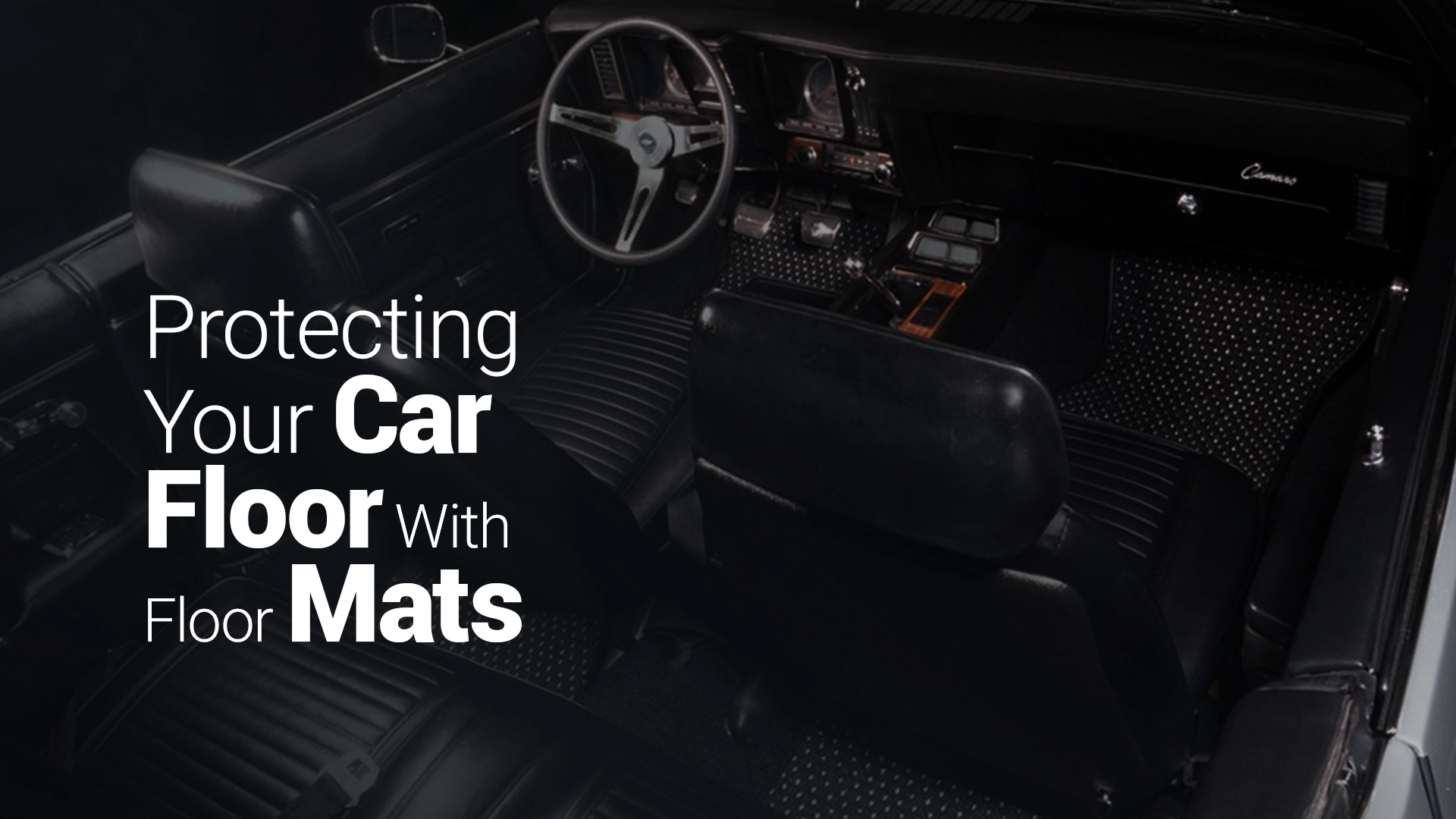
Trust me, your vehicle’s carpet goes through way more than you think it does. Perhaps you live in a rainy or muddy area, or you pick up kids or pets along for a ride –– either way, having a proper floor mat is there to protect your vehicle from all the food and drinks you’ve spilt, or the dirt and mud you’ve tracked through.
Having ample protection is even more crucial if you live in regions with rain and snowfall, as the water or snow may contain harmful microorganisms that can fester inside your vehicle, which may lead to mould growth or other irreversible electrical and mechanical problems. For example, once water enters your vehicle’s electrical system, it may prevent your distributor from sending electrical signals to the spark plugs.
Having a proper floor mat or liner can save you a ton of work when cleaning your vehicle’s interior, which will aid you plenty when creating an odour-free and sanitary environment. Read on more to find out what kinds of car floor mats and liners we recommend. You may also want to know how to dry car floor mats.
Floor LinersAs the name suggests, floor liners help to line each and every visible square inch of your vehicle floor. Whilst floor liners are considerably more pricey, they offer a fit-all shape that provides lips and walls around the edges which trap liquid and debris from spillages. This means that developers would need to examine the floor of each vehicle to create customized floor liners that perfectly match your vehicle’s contours.
Floor liners help to provide considerably more protection than mats when it comes to spillages and excess fluids. You won’t need to worry about fluids seeping through the cracks or corners of your liners –– these products use high bolsters that can collect and trap any liquids on their surface, ensuring that nothing seeps onto the carpet they are covering. Furthermore, you won't need to fuss about these liners shifting and sliding out of place! They come with small spikes attached to the bottom that hold tightly onto the floor of your vehicle, locking it in to become an extension of your vehicle.
Floor MatsWhilst floor mats can offer the same amount of protection as floor liners, they aren’t customized by developers to match each vehicle floor and driver; instead, they come in a range of premade sizes where drivers can order online or in-person. This is done to keep the manufacturing costs of each floor mat significantly lower than floor liners, which is hence reflected through their relatively cheaper prices. Though these sizes may not be tailor-made, drivers need not fret –– you’re still able to choose from a variety that can contour closely to the size and shape of your vehicle.
As the floor mats do not adhere completely to the exact dimensions your vehicle may have, there is a possibility that they might slip and slide around. Whilst this may result in a slight hindrance, floor mats are considerably more malleable and flexible as compared to floor liners. You don’t need to worry about locking it down in the perfect position –– just put it down and start driving! Plus, rather than using high bolsters to trap and redirect the liquid to the surface, floor mats utilize deep chambers embedded deep within the rubber to retain the fluid. If you notice excess fluids piling up on the mat, take it out and give it a shake –– a quick wipe should do the trick.
Floor Mats vs Floor Liners: What’s The Difference?Regardless of whether you end up choosing floor mats or floor liners, both products are equipped with durable, tough-as-nails rubber, where you won’t need to worry about breaking if you’re driving. Installing a mat or liner helps to protect and facilitate the removal of excess fluids from the floor of your vehicle, hence preventing them from being absorbed into the system.
Instead of paying thousands of dollars on repair fees, isn’t choosing to have an inexpensive floor mat and liner the much better option? However, there are some slight differences between having a floor mat and liner that you may want to consider. We’ve listed three possible features that you should take note of: the rims and ridges, thickness, and the underside of the mat.
Firstly, selecting a product that has higher ridges and rims means that there is less liquid and debris spillage when fluids begin to pile on. Plus, you can choose a floor mat that has grooves and ridges that force liquids away from the driver’s feet.
Secondly, whilst choosing a thicker floor mat or liner allows the product to provide more cushion and absorb more fluid, it can result in one hell of a cleaning process. When choosing a rubber or plastic mat, do make sure that the grooves around it are deep enough to prevent liquid from spilling out.
Lastly, remember to take note of the underside of the mat or liner before purchasing them. You don’t want a mat that constantly slides around! Ideally, there should be a small hook attached to the vehicle that can connect to the mat and liner, and keep it in place.
ConclusionWhilst both products are great choices for vehicle prevention, it boils down to your individual needs and preferences when choosing between mats and liners. For example, drivers with kids, new vehicles, or spend significant amounts of time in rocky and dusty terrains (frequent spillages, beaches, mountains, snowy, rainy conditions) may prefer having an all-coverage floor liner that can protect the floor from wear and tear. Alternatively, drivers who have an older vehicle may prefer a more inexpensive floor mat that can provide enough protection. For these drivers, purchasing a floor mat won’t cost you as much money, but it’ll still protect the vehicle from exposure to excess moisture and fluids.
No matter the decision, having a floor mat or liner is a great investment to improve your vehicle’s cleanliness and look. However, do choose wisely to ensure you get the best interior protection that’s guaranteed to give you peace of mind.
Things You Need To Know About Car Mats Info 09-Apr-2021 Introduction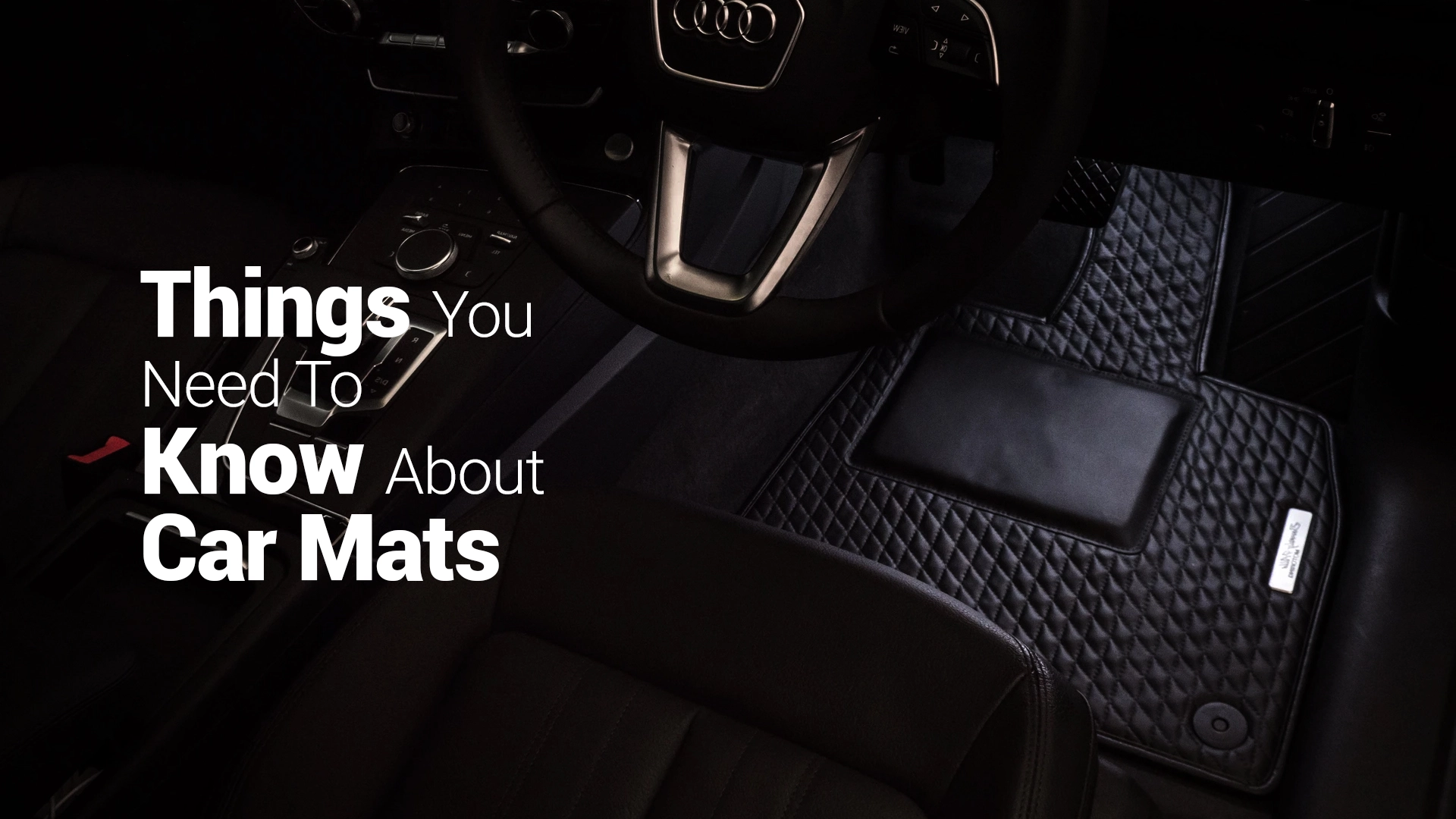
Regardless of if you have recently purchased a new car or if the current floor mats you own are showing signs of ageing and needs replacement, it is common knowledge to all car owners that there are two types of floor mats available on the market - Carpet and rubber car mats.
Serving as a quick and easy way to upgrade your vehicle, car floor mats also double up by protecting the interior of your vehicle. Think of them as a long-term investment in protecting your vehicle! The mats picked should not only be functional but should also be eye-catching and aid in the customisation of your vehicle’s look.
Read on for what we think are some of the most important considerations before committing to either type of car mat, and let us know your thoughts.
If you are looking for comfort, style and personalisationIf your priority is looking for a car mat that provides you with comfort while at the same time being stylish, your best bet would be the carpet floor mats. Available in a wide variety of colours and patterns, your carpet mats can even be customised with embroidery if you opt for the option of designing your own car mats.
If you are one who prefers patterns, opt for the Car Couture line, where patterns available include animal prints, as well as oriental designs suitable for those who like a touch of exoticness in their vehicle.
Thermoplastic mats usually come in a limited selection of up to four colours and do not offer any further customisation options. If you are picky about the look of your vehicle’s interior, this probably isn’t the choice for you. However, if you are willing to forgo style for extra protection, thermoplastic mats might be what you want to consider. A proprietary automotive backing by GG Bailey ensures that your floor mat stays where you want it to be while protecting your vehicle’s carpet at the same time.
If you are looking for protectionAs mentioned before, thermoplastic mats do not offer a wide choice of colours or patterns. However, what they lack in style is more than made up in substance. Thermoplastic mats are great for protection against inclement weather as they ensure that mud and dirt are kept off your pristine clean carpets. However, one point to note is that the material sits atop the mat until the mat is cleaned, so the debris could possibly get on your shoes.
To help allay the fears that your shoes will be dirtied, most liners have been produced with raised ridges or patterns which aid in channelling debris or liquid away from where your feet are. Over time though, these areas will also require cleaning. After all, there is a limit as to how much dirt the ridges can hold!
Made of the strongest and most durable fibres, our carpet mats are resistant to mould and mildew. If you opt to design your own car mats, there is the option of adding a heel pad to allow for extra protection against wear and tear in areas of high friction. This might be useful if you have little children who love digging their heels into the car floor, or if you expect them to spill food or drink in the car.
If you opt for our luxury Car Couture line, water will be absorbed by the mats, which also help in hiding any possible dirt and debris which may have accumulated in between cleanings. This has been so highly regarded by customers that we have even launched a spin-off line of home mats using the same material.
Carpet mat personalisation optionsIf you’ve decided on going with carpet mats, now is a good time to think about how you want to customise your mat. Though there are only four steps to the customisation process, there are over a thousand possible permutations. Pick your favourite out of 10 colours for your carpet. After that, choose from 41 options for the edging, and a further 19 options if you wish to add on a heel pad. Two shapes of car mats are available for you to pick from. If that isn’t enough, there is also the option of adding on monogrammed initials, your full name, or even a special message; as long as it is no more than 10 characters long.
Ways to keep your floor mat in placeOne common worry of many car owners is that their car floor mats will slip around inside the vehicle, making it unsafe and troublesome to deal with. An important consideration when buying your car floor mat would hence be its weight. Mats made of heavier materials are less likely to slip around than mats made of lighter materials. You could also consider the use of carpet tape to help your car floor mat stay where you want it to be. Coated with adhesive material on both sides, the carpet tape ensures that the mats stay in place on top of the car floor. As long as the adhesive holds, the mat will remain in place.
If all else fails, consider using a screw. Simply nail a single screw into the mat till it comes into contact with the carpet. The best position for a screw will be at the centre of the mat, such that only one screw needs to be used. Do note that this method is only suitable if you do not have pets or young children who will ride in the car, as screws pose a safety risk to the wandering hands and curious minds of pets and young children if they manage to pry it loose.
ConclusionCongratulations! You now know everything there is to know about the two main types of materials for car floor mats and how to choose one that suits your needs. Run down to your nearest automotive shop and grab one today
Six Materials Of Car Mats To Choose From Info 07-Apr-2021 Introduction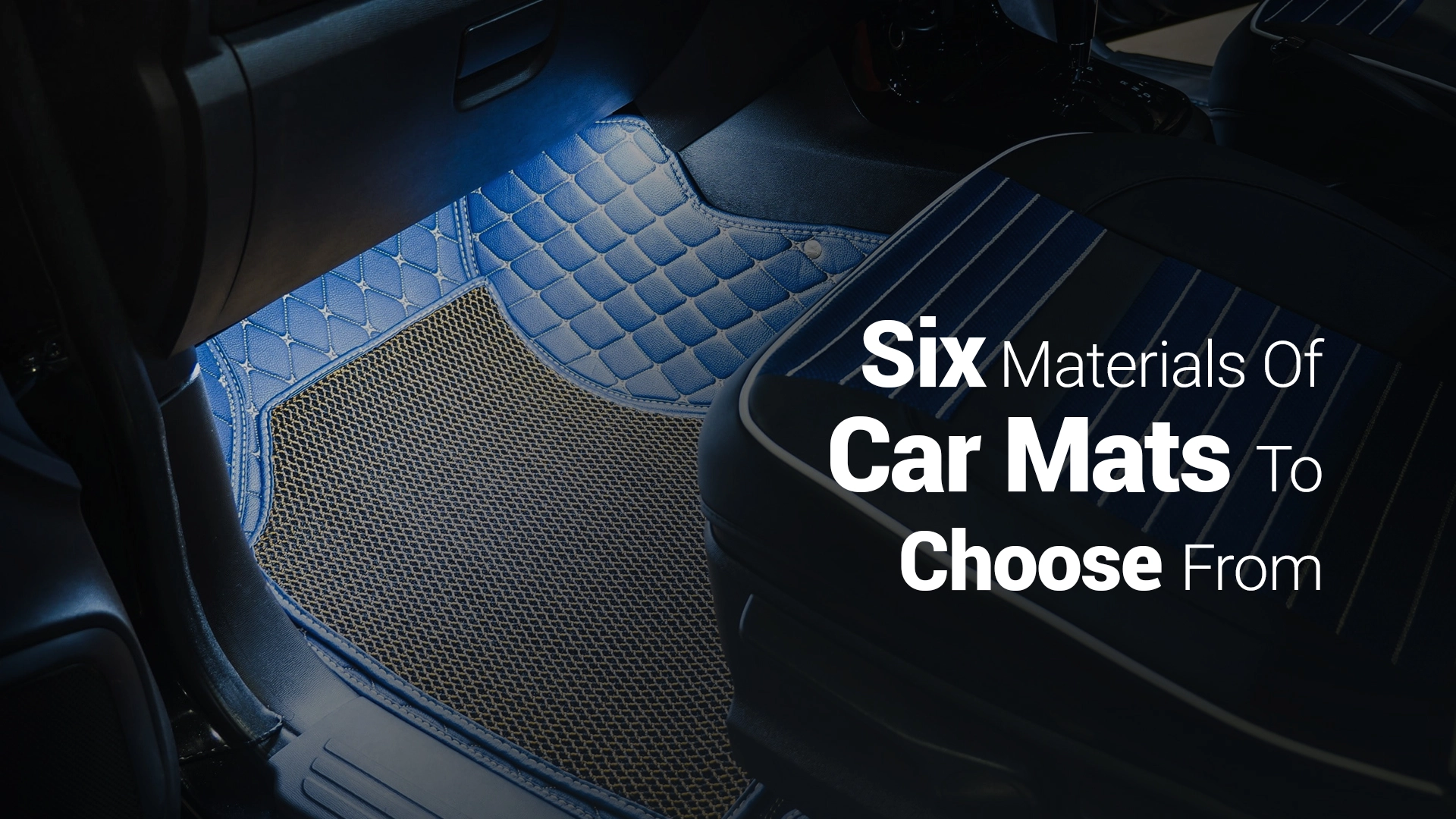
Car owners, especially new ones, will likely wonder which is the best car mat for their vehicle. As each person’s needs differ, it is probably easiest for us to inform you of the various types of mats, such as logo mats available online and leave the decision up to you.
Basic Features Of Car MatsSafety comes first, even before preference and needs. Car mats that fit snugly on the floor without obstructing important driver controls like the brake pedals are considered safe. Additionally, they should not be slippery because that could cause the driver to accidentally hit the acceleration or brakes.
The mat should be fitted with a tool to secure the mat down to the floor at the passenger seat. Do note that velcro will not suffice. If there is no way to fasten the mat, avoid getting it. Not fastening the mat to the floor could cause dirt and water to seep through and cause damage to the vehicle floor. This completely defeats the purpose of the car mat.
Lastly, the car mats should be made of eco-friendly materials not only for the environment but also because we don’t want harmful fumes from the rug to be circulated in our vehicles.
Original or Non-Original rugsOriginal rugs are those that come from the same manufacturer of the car model. As such, they fit better and are likely to be of a higher quality than non-original ones. Non-original rugs look great and have high sides. Although the durability of both types of rugs depends on the weather, the former tends to last longer than the latter.
When car mat shopping, look out for the material and the fastening mechanisms of the mats before making your choice.
Now let's look at the different materials that car mats come in.
1. 3D Car MatsHigh-quality 3D car mats have a host of advantages in terms of function over other materials including protection from pollutants, durability, comfortability of occupants, climate versatility, and safety. These volumized rugs are also aesthetically pleasing which not only speaks to the style of the driver but also brings joy with every ride in the vessel.
These days, some 3D car mats are being manufactured with a material that keeps dust at the bottom of the car and away from the air that the driver and passengers will breathe.
The best part about these car mats? Buyers won’t have to break the bank to get their hands on one of these. They are not the cheapest but given the features of this advanced car mat, it is surely an investment worth making.
2. Rubber Car MatsRubber mats are a popular alternative to 3D mats because not only are they easy to wash, but they are also affordable and offer complete protection from contaminants. They have an average lifespan of 2 to 3 years which is not bad. Rubber mats are often cut in a generic shape which means they are a universal fit. Some disadvantages of rubber are that it may lose flexibility in the cold and produce an odour in the heat. The best way to minimize these problems is to invest in higher-quality rubber car mats.
3. Polyurethane Car MatsPolyurethane car mats look like rubber ones but have a couple of added benefits. They are lighter, more resistant to wear and tear as well as deformation, are more durable, and odourless. That said, they are almost three times pricier than rubber car mats and they rarely retain dust.
Installing polyurethane car mats might also require the mat to be hand-cut which can create an unprofessional finish around the edges. So, if appearance is important to you, then you might want to go for rubber mats. Polyurethane rugs are also smooth which can cause the driver’s feet to slip. They also lose their elasticity easier than rubber mats.
4. Textile Car MatsTextile rugs, also known as Fabric or Pile car mats, look nicer than rubber or polyurethane, retain more dust, prevent slips, and do not lose their shape if dried appropriately in the winter.
The downsides are that they lose their colours quickly, can cause moisture and puddles to accumulate at the driver’s feet, and cause fogging on the glass when the heater is on. Although these are only likely if the rug is of low quality, it should still be factored in in your shopping decision.
It is pivotal that textile rugs have a rubberized base for friction and contamination prevention. Although textile car mats can be troublesome in cold climates, they are just nice for warmer temperatures.
5. EVA Car MatsEthylene Vinyl Acetate (EVA) car mats are new in the market but are indeed an impressive material. Thanks to its design, users can slightly tilt the mat and safely remove it for cleaning without spilling the contaminants. To clean and dry it, simply flip it 180 degrees and let it air for a while. EVA car mats are also eco-friendly, chemical-resistant, wear and tear-resistant, light, and will do well in extreme climates.
6. Velor Car Mats
Velor car mats are another less well-known but interesting option. They absorb water and retain dirt and dust to keep your vehicle clean. They are light, easy to clean, comfortable, elegant and, we think, a better option than textile rugs. We have given a comprehensive overview of six different materials of car mats including the pros and cons of each. While the features of the mats are important, remember that your preference, comfort, and the climate of the area where you live should also be factored in when making your choice. The car mat should also fit your vehicle, be durable, and fit the aesthetic of your car.
ConclusionIf you’re still hesitant about the whole idea of a car mat, experienced drivers often testify to the need for a car mat in their cars. Car mats are a lifesaver and are definitely worth your investment given the numerous advantages and protection they provide for your vehicle. For one, they keep the floor of your car clean and prevent it from corroding. Additionally, instead of having to clean the floors, owners only have to clean the mat. Lastly, and perhaps most importantly, ensure that the car mat of your choice meets all the safety features required.
Being Smart About Buying Cars General 05-Apr-2021 Introduction
If you’re looking to get rid of your old, beat-up vehicle and are ready to purchase a new car, this article is for you. Buying a new car, however, can create opportunities for mistakes for many buyers, such as if you neglect to consider the various types of car mats online to protect your vehicle’s interior. To make smart decisions about your vehicles and avoid rolling in debt, here’s a guide for saving the most money.
1. Prepare An Approved LoanThe top advice among auto dealers is to get a preapproved loan from a credible lender before even choosing your car. Firstly, it prompts buyers to think about their budget before setting their minds on a pricey limited model. Secondly, it allows buyers to identify and straighten out any credit issues. Lastly, credit scores also guide buyers on the interest rate that dealerships can offer. If a dealership is charging higher interests than you qualify for, then you know that it's a deal you should not accept. If a dealership offers a lower interest rate than your preapproved one, consider taking it after checking the terms like down payment and the period of the loan are correct.
Having a pre-approved loan gives buyers the upper hand but can also cause major issues if the lender is not credible. Online lenders are especially hard to identify so it’s best to turn to a local bank or credit union.
2. One Thing At A TimeWhen negotiating the dealership, do not respond to questions about whether you will trade-in or get a loan through the dealership. Doing so would reveal all your cards to the salesperson who might then give you a lousy price for your trade-in or increase the interest rate to earn more from you. This makes the dealership way more complicated than it has to be.
Do one thing at a time. Start with settling the price of the vehicle; a little research before this is beneficial. There are plenty of pricing guides online as well as the price for vehicle models sold in your area so do use these resources to your advantage.
3. Don't Get The ExtrasDealerships can get a lot of money out of buyers’ purchases of add ons. After buyers are tired from all the waiting, price settling, and thinking about a trade-in, that’s when the finance manager will be brought to their attention. From there, they sell add ons like protection plans and paint protection plans at prices that are higher than what you’re getting. Most buyers don't know this and neither do they know how to calculate the prices. So, the best way to avoid this is to just say no.
For longer loans, the finance manager might convince buyers by saying that it's only a little extra each month. Buyers who are not thinking about the long-term accumulation will take the bait. An extended warranty is a form of insurance but you can always buy it three years later, right before the expiration of the new car warranty. That way, you don’t pay for an extra three years of unused coverage. You can also choose among the dealerships that offer good prices for the extended warranty after three years. If your new car gets damaged and your regular insurance cannot cover the cost to replace the vehicle entirely, the gap insurance can cover the cost difference between the buying price and your normal insurance coverage. However, the gap insurance can be riddled with issues and frequently overpriced. Ideally, you should get the coverage from your normal insurance agency instead of the dealership.
4. Warning For Longer LoansTaking six- or seven-year loans can be a dangerous endeavour. The monthly payback in longer loans might be lower but the interest incurred is higher. For a seven-year loan, you’re paying more interest in the first few years than the principal amount and most buyers don’t realize this. If this carries on, the money that buyers owe will exceed the value of the car. For instance, in the fifth year of your loan, you might need to sell the car because it no longer meets your needs or you can no longer afford it. Then, not only do you have to continue paying for the vehicle, the vehicle itself doesn’t even serve your purpose anymore. Paying for something that is no longer worth paying is not a smart way to go.
The best length for a loan for a new car and a secondhand one is five years and three years respectively. These are the sweet spots for car loans as it is more likely that when the car runs out of value or is no longer worth repairing, the loans have already been fully paid for. At the same time, the monthly payment is manageable and buyers know that they are paying for something still of worth to them.
Something that novice and experienced car buyers should remain wary of is the terms of the loan. Sometimes dealers insert an extra charge or two in the loan which could cost buyers more than they can afford. Some buyers don’t realize this until after they have signed and returned home with the contract because all they can focus on is how they’ve just gotten a great deal. Once this happens, it's likely impossible to get a refund on those charges, so check the contract thoroughly before making any commitments.
5. Consider Getting A Used CarAs a general finance guide, car loans, maintenance fees, insurance coverages, gas, and repairing expenditure should take up 20% of the pay you bring home. The car loan itself should be between 10 and 15%, and if getting a new car will exceed this budget, we suggest that you consider used cars.
The quality of used cars in the market is amazing these days in terms of the mileage and the physical condition of the vehicle. Good cars are being bought and used a couple of years before they are sold yet they can still travel the distance and help car owners save their money. That said, you should definitely look up the car models that have lots of great reviews and a low likelihood of requiring pricey repairs after a couple of years of driving it.
Other secondhand car users justify their choice by saying that the money used to buy a brand new car could alternatively be saved up for retirement, tuition fees for your children, and lots of other things they would much rather have the fund for.
ConclusionThat brings us to the end of our tips for making smart purchasing decisions about your vehicles. We peeled back the curtains on some of the tricks of dealerships so you can make the best decision for yourself. The moral of the story is to think carefully about your priorities as well as looking thoroughly through your car loans and contracts before signing them. We wish you the best of luck!
Prolong The Lifespan of Your Car with These Tips Info 03-Apr-2021 Introduction
Automobiles are expensive yet each serves us for only about a decade and a half before they are scrapped. As such, car owners should prolong the life of their vehicles by taking care of them by taking the appropriate precautions. We’ve done the research and listed 12 ingredients of good car maintenance. Here’s a bonus tip on top of the 12, check out Simply Car Mats for a quick way to protect the interior of your car!
1. Use it or lose itThe car battery will likely go flat if you’ve not been using your car for a while. If you do not have to drive for a while, particularly in the winter, try to drive it once a week. Alternatively, you can invest in a trickle charger to keep the battery charged up.
Similarly, not using the air-conditioning system regularly could cause gas leakage over time. You might save money on fuel only to end up paying more for repairs.
2. Renew these frequentlyThe air and oil filters should be renewed regularly with quality materials and the appropriate steps. Some car owners switch the air filters themselves to save some extra bucks. However, if you want to ensure the job is well done, we suggest doing them together with the regular car servicing.
Faulty spark plugs can be a sign of an engine issue so do consult a local service if that is the case. If it's just worn over time, then you can simply replace them. Leads that are broken or damaged should also be replaced.
3. Refill fluids frequentlyLow oil or petrol levels can damage the engine. Running on low petrol causes contaminant sediments to be dislodged into the system, clogging the pumps and filters. The cheapest solution, in the long run, is to conduct checks on the fluid levels every fortnightly.
While checking the oil or petrol level, check the colour as well to ensure that the oil is not dirty. Dirty oils are usually darker in colour, although it's normal for petrol to be black.
Check the antifreeze levels as well and make sure it is mixed with equal parts water when refilling the coolant tank.
4. Monitor the tiresTyres should neither be under-inflated nor overworn as those are safety hazards. On top of ensuring that they’re sufficiently pumped, you should also check that the level of tread is 2mm or above. A pro tip is to use newer tires at the front and older ones behind as that increases steering control which could save your life one day.
5. Don’t skimp on servicingCheck when you should bring your car for servicing in the vehicle manual and stick to the schedule. There are generally two kinds of servicing; minor and major servicing. Just for your information, a usual servicing should include a check for leaks, clutch functionality, steering, tire condition, exhaust emissions, lights, horn, and windshield wipers. This may seem like a small task but it goes a long way in helping your car stay on the road longer.
6. Use your garageGarages keep your vehicles clean, dry, and safe from scratches, theft, and other damages. Parking your car inside can also reduce the premium of your insurance. If a garage is not available to you, invest in a good cover for your car.
7. Keep things lightCars that are travelling lighter have better mileage and lesser need for fuel top-ups. You may think that you’re already carrying minimal weight but think again. The glove compartment, door pockets, boot, as well as roof bars are some common places where unnecessary weight is added. The idea is to keep only what you need (e.g., breakdown kit) and travel light!
8. Surface maintenanceWhile rusts are rare in modern automobiles, they could still happen. If it does, send your car for a repaint before the rust spreads. To prevent rust, protect the chassis with a rust-proof sealant and install a film at the front so abrasive objects don't scratch the paint layer off.
Another method to prevent corrosion is to wash your car regularly. We usually recommended hand wash instead of automated ones because the latter can leave scratches and be ineffective. Using the appropriate store-bought cleaning products is recommended while having an annual polish can go a long way.
While you’re at it, why not clean the inside of your cars as well, especially surfaces where dirt and dust can get accumulated.
9. Avoid engine modificationsModifying your engine for more power causes wear on other components in trying to keep up. Thus, not only is the lifespan shortened, but the value of your automobile is also weakened.
10. Eyes on the roadWhen driving on rough surfaces or roads with potholes, not keeping your eyes peeled could mean serious damage to your car. It could flatten tires, cause misalignments, scratches, and even power depletion. Prevention is better than cure, so drive on smooth roads whenever possible.
11. Use original productsWhy risk paying for pricey repairs by using sub-quality components? Rather than saving this small sum, invest in the original high-quality components and save more in the long run. This applies to the engine oil as well. Follow the recommended oil in the vehicle manual as that is what will prolong your car.
12. Be aware of warning lightsThe warning lights do as their name suggests. They warn you when there are issues in the function of your vehicles like the brakes and steering. Importantly, the engine light alerts various issues including loose caps and polluted converters. If you’re unsure of what the lights mean, you should get the car checked out as soon as possible. If you understand the warning lights and know the proper steps to take to resolve the issue, then do so carefully. Conclusion
With that, we conclude the 12 tips car owners can follow to lengthen the time their car spends on the road. If this is too much information to remember and are looking for a golden rule, at least remember this one thing. Be alert of your car’s condition by conducting fortnightly checks on the fluids, tires, inner and outer surfaces, and lights. With that, we hope that this article has been helpful in your attempt to prolong the life of your car. No one said that being a car owner would be easy.
Car Maintenance 101: Why Every Car Needs Floor Mats Help 01-Apr-2021 Keeping Your Car Clean With Car Mats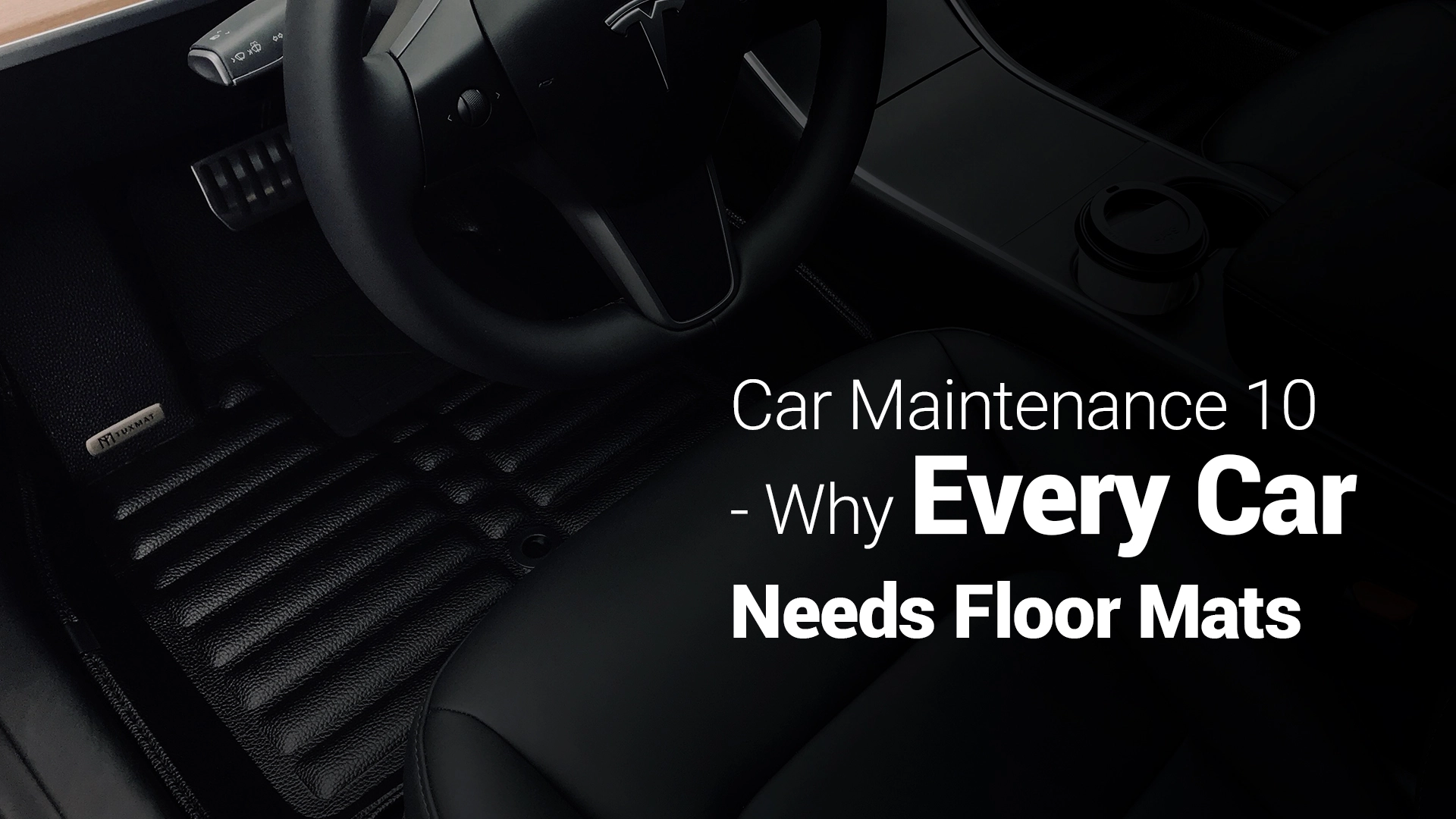
For many car-owners, their cars are a reflection of themselves. From the way they maintain the cleanliness of their vehicle to how they choose to decorate the interior, people put in a lot of time and effort into giving their car’s a personal touch. And, when most people are thinking about sprucing up their cars’ interior, one of the most common things to do is to add air-fresheners or cushions.
While those accessories can be useful, they’re definitely not as important as floor mats. Adding floor mats to your car will go a long way in keeping it clean and protecting the carpet of your vehicle. More than that, floor mats may even save you from a nasty fall! Car owners have shared stories of them slipping when they got out of their vehicles because the soles of their shoes were covered with ice, slush, and water. If they had floor mats in their cars, some of that dirt and grime would have been removed.
If you still need some convincing about why your car needs floor mats, look no further! In this article, we’ll cover everything you need to know about car floor mats — why they’re useful and what type of floor mat you should get. And if you’re wondering where to get them, Simply Car Mats is your answer. Continue reading to find out more!
Benefits of Car Floor Mats: 1. Protecting the carpet of your car from unwanted dirt stains or odoursWhenever you get into your car, you track in everything from dirt, sand, rocks, and water depending on where you’ve walked. And, though getting rid of all of these things seems as simple as vacuuming your car, stains can form from the dirt and grime. What’s more, if you have a habit of eating and drinking in your car, spillages and leaks can also contribute to unwanted stains and unpleasant odours. This is where floor mats come in handy. They not only protect your car from unwanted stains, but they’re also super easy to remove and clean.
2. Protecting the resale value of your carYour car’s resale value depends on many things like the age of your car, its initial buying price and the state of the engine. However, another factor that contributes greatly is the condition of your car’s interior. Nowadays, many second-hand car owners can be quite fussy about stains or worn out car seats. If they sense that they’re not getting their money's worth, they may try to bargain for a cheaper price or even call off the deal altogether. If you’re planning to sell your car, one way to ensure that you maintain your car’s interior in tip-top condition is to use floor mats. Trust us, it’s definitely worth it to spend a few dollars getting car mats instead of losing the resale value of your car if you happen to get a fussy buyer.
3. Protection from corrosion from road salt, mud, and waterDuring the winter, road salt is often sprinkled on roads as a way to control and ice and snow, making it safer to drive. However, when road salt comes into contact with water, it also speeds up corrosion. In the temperate climate of the UK, chances are you track road salt and water into your car whenever you go out during the winter. Without floor mats, white stains may show up on your car’s carpet as a result of corrosion. As such, it’s pivotal to add floor mats to protect your car’s carpet and prevent white stains from forming.
All-Weather VS Carpet Floor MatsAll-weather car floor mats are often made out of heavy-duty rubber or vinyl. They’re a popular choice among car-owners globally as they’re easy to remove and clean. What’s more, they’re hardy enough to withstand harsh climates and dirty conditions. If you live in an area with heavy rainfall or snow, and track-in a lot of debris, all-weather floor mats are a suitable choice.
To clean all-weather floor mats, simply rinse them down and give them a quick wipe. Just like that, you’ll have a clean car floor again!
One of the only downsides of all-weather floor mats is the limited range of colours that are available on the market. Rubber car mats only come in tan, black, or grey. While this is often not a concern for most car owners, some can be particular about matching their floor mats to the exact colour of their car’s interior.
On the other hand, carpet floor mats are usually made of Berber yarns and durable nylon fibres that are stitched together. They’re softer than rubber mats but provide as good a defence as rubber mats against dirt and grime. Custom carpet floor mats are also a great replacement for the factory-made ones that come with your car as they’re thicker and last-longer. Unlike all-weather floor mats, carpet floor mats often come in a wide array of colours so finding one that matches your car’s interior won’t be a problem. Carpet floor mats can also be embroidered with various logos and designs so if you’re all about personalising your vehicle, this type of floor mat is perfect for you!
Who Makes ThemMany retail shops rip customers off by selling one-size car floor mats. For buyers who don’t know any better, having a floor mat is sufficient enough, regardless of whether they’re the correct size for their car. But, having an ill-sized floor mat won’t do much to protect your car’s carpet from dirt and grime.
That’s why we recommend getting your floor mats from specialised car floor mat manufacturers. Weathertech Floor Mats and Husky Liners are two very popular car floor mat brands. Their floor mats are available in over 50 patterns and sizes so you’re bound to find one that fits your car perfectly.
ConclusionNow that you know more about car floor mats and why they’re so important, what are you waiting for! Protect your car’s carpets from unwanted stains and odours by buying floor mats today — and make sure they fit your car properly. After all, you’ve shelled out a hefty amount of your savings on your car already. Make your money’s worth it by taking care of it and maintaining it properly!
Everything You Need To Know About Buying A Used Car Info 30-Mar-2021 Tips And Tricks For Buying Secondhand Cars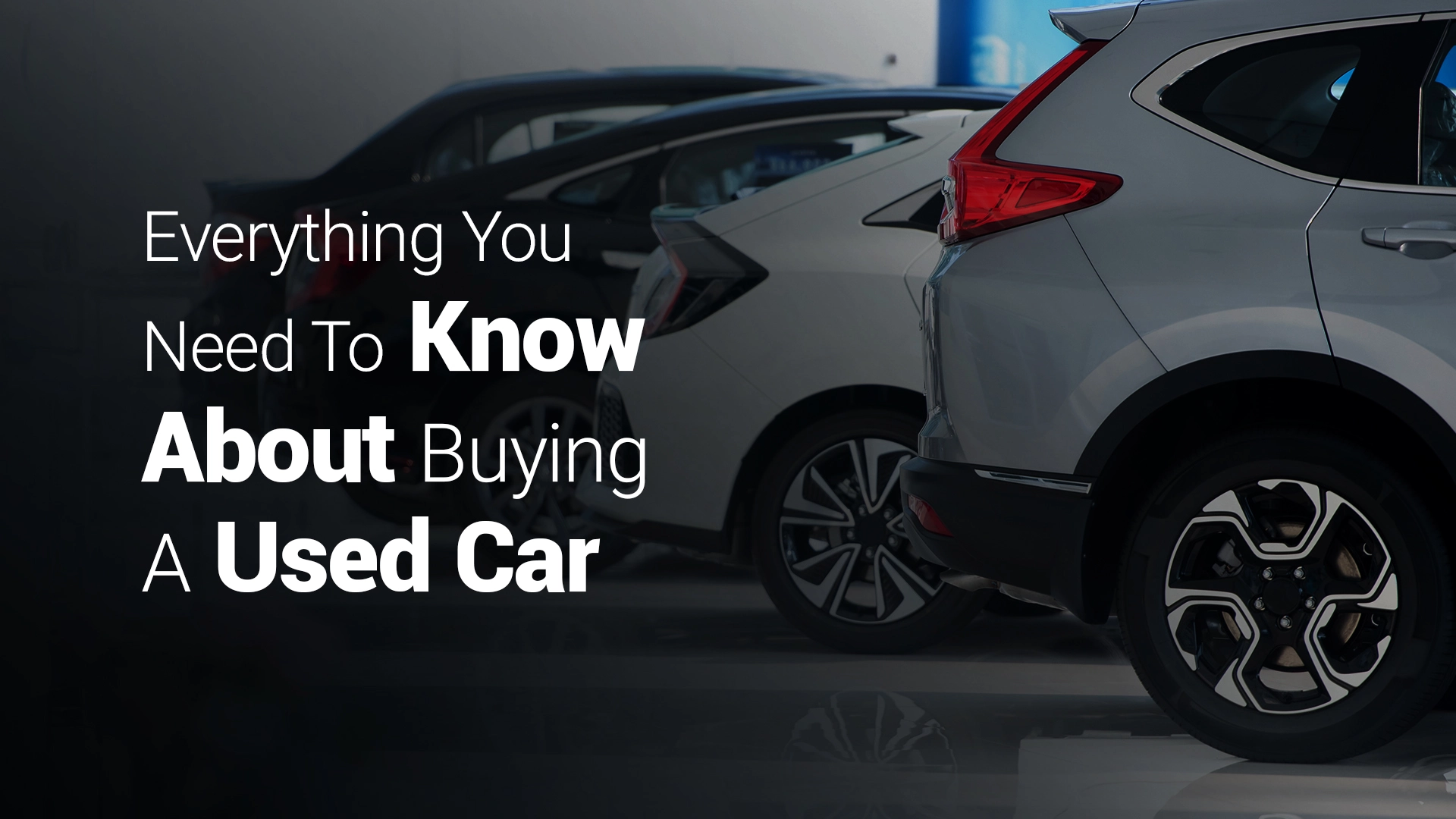
Buying a car isn’t cheap. In fact, it’s a huge financial commitment. Not only do you have to pay for the car itself, but you also have to factor in other payments like road tax, petrol costs, and maintenance fees. If you’ve already made the commitment to buying a car, but are still thinking of ways to save some extra cash, why not get a secondhand car instead? And if you need a new car mat to fit your purchase, get one at Simply Car Mats.
Depending on what kind of secondhand car you buy, and who you buy it from, you can save as much as half the price of a new car. However, buying a used car is more than just looking for the cheapest option available on the market. You need to know how to tell a good deal from a bad one. And, this is where it gets tricky. But, lucky for you, we’ve compiled everything you need to know about buying secondhand cards in this article. Continue reading to find out how to make a sound decision when choosing your first used car.
1. Create a checklist of requirementsFirst things first, you need to know what you want from a car before buying it. Do you have a large family or are you single? Do you care about horsepower or are you simply looking for a vehicle that can get you from point A to point B. Questions like these are important as they help narrow down your choices and what car models you should look at. For car buyers with large families, a minivan would be a great choice as it’ll be able to fit the whole family. However, if you’re looking to get a car to drive yourself to work, a simple 4-seater sedan will be sufficient. Of course, one of the most important requirements that will ultimately decide what used car you buy will also be your budget. So, do remember to take all these into consideration when creating your checklist of requirements.
2. Consider the costs involvedLike we’ve mentioned in the introduction of this article, the cost of owning a car doesn’t end after you’ve paid for the vehicle. Road tax, petrol, and maintenance fees are all costs you need to consider before purchasing a car, new or used. Generally, bigger cars with larger engines tend to use up more gas and have higher road taxes. Cars that are hybrid or fully electric will also have different maintenance costs than cars that run on petrol or diesel. What’s more, though older secondhand cars may have a cheaper price tag, they’re also more prone to breakdowns so you may end up spending more on repair costs. So, before going ahead with your purchase, take note of all these long-term considerations to decide whether or not the car is worth buying.
3. Carry out a vehicle history checkThe GOV.UK website allows users to check the MOT history of any vehicle. Simply type in its registration number and everything from mileage, accidents, to outstanding bills should be displayed. Doing this is especially important when buying a secondhand car because some dealers or private sellers who are looking to make a quick sale may not readily provide you with all this information. To make sure that you’re making an informed purchase and get your money’s worth, don’t miss out on this extra precautionary step.
4. View the car in personMany used car dealers and private sellers post car listings online. While it may be much more convenient to simply purchase your used car online, don’t fall into this trap. Remember, buying a car, both secondhand or new, isn’t like buying a new top online. You need to go and check the vehicle personally to ensure that the car you see posted online is in the same condition in real life. Furthermore, it’ll also give you a chance to meet the seller.
If you sense that there’s anything off about him or her, or that they may be hiding something to make a quick buck, don’t hesitate to call off the deal.
If it’s your first time buying a car, you should also try bringing along an experienced car-owner who can help decide whether the car is worth purchasing or not. Plus, you won’t be pressurized into making the purchase as opposed to if you were by yourself.
5. Take the car for a test driveViewing the car in-person is one thing. But, the only way to truly know if it’s the right fit for you is to take it for a spin. Car dealers or sellers should have no qualms about you taking the car for a test drive. In fact, it’s something they should offer when you view the car. If the seller seems hesitant about you driving the car, this is a red flag and it’s better that you walk away from the deal.
6. Check all the vehicle’s documentsAnother important thing to look out for is to check that the car comes with all its requisite documents. Such documents include the service history, MOT history, vehicle handbook, as well as V5C registration paperwork that should include the owner’s correct personal details and vehicle registration number.
Should I pay by cash, card, or loan?
When purchasing a used car, the most common forms of payment are cash, card, and taking a bank loan. Whichever you choose really depends on your financial situation and who you purchase your secondhand car from. If you’re buying from a private seller, most of them accept cash while dealers offer you credit card and financing options.
You won’t have to worry about paying interest if you choose to pay with cash. However, in the event something goes wrong, you’ll have little to no protection. Paying through credit card or bank loans gives you full buyer’s protection and allows you to spread out your payments. However, that also means having to pay interest.
ConclusionNow that you know what to look out for when buying a secondhand car, we hope you’re better equipped to make an informed purchase! Looking for the right secondhand car can be a tedious process but we’re sure you’ll be able to find a good deal. So, what are you waiting for? It’s time to start the search for your new set of wheels.
A Simple Guide To Installing Car Mats Info 28-Mar-2021 Introduction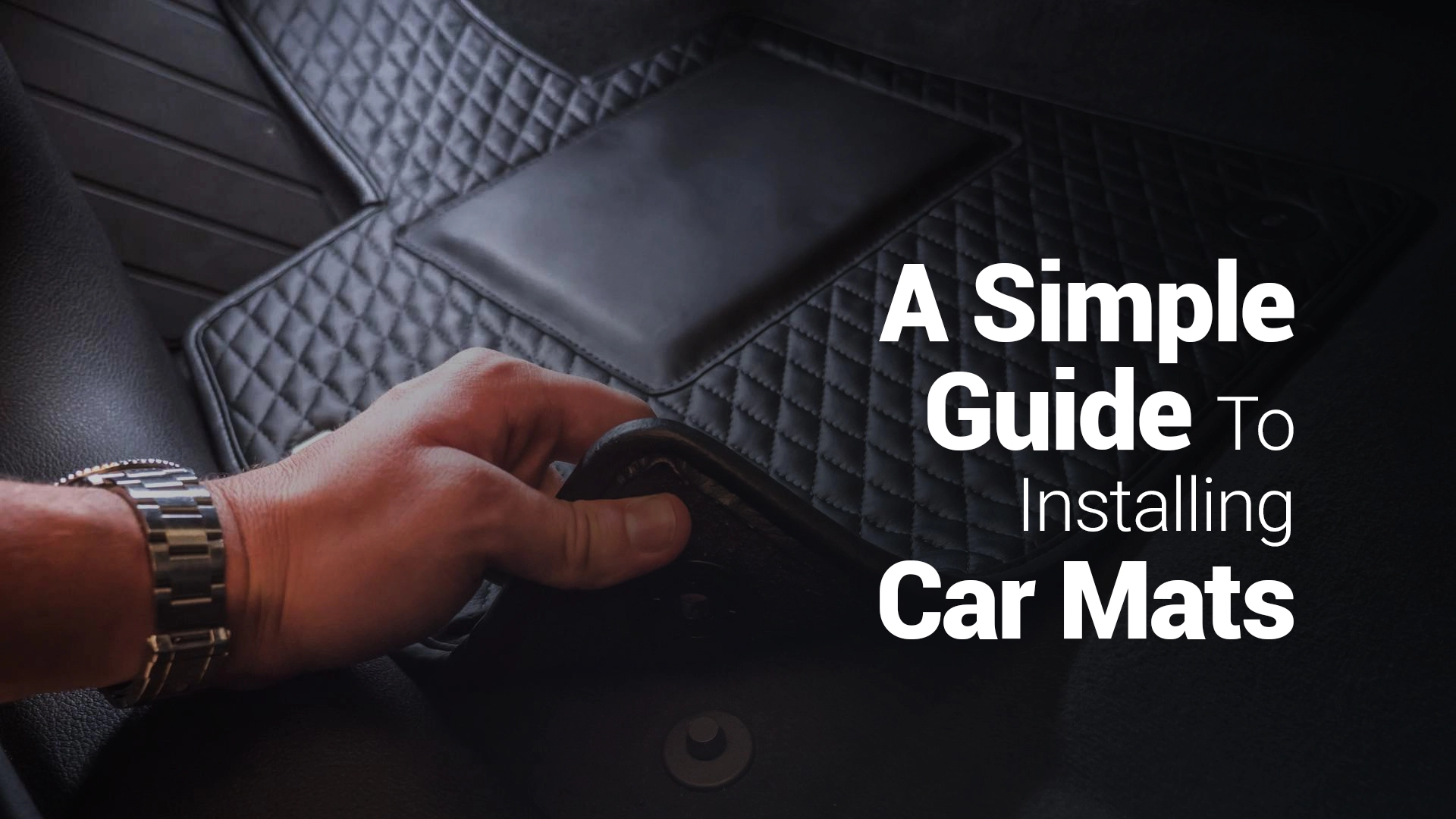
Car mats are vital and very important to a vehicle as it helps to ensure the original carpet does not get ruined from dirt, liquids and gravel. Without car mats, your car may be potentially damaged because the carpet covering the flooring is simply not enough. These mats come in a multitude of sizes and types, hence it is essential to pick one that fits your car best. Don’t worry, there’s a huge range of car mats available today meant for your car specifically.
Here is a simple fuss-free guide to install your car mats properly.
1. Measuring to FitFirstly, you need to measure the size accurately. This is especially important for customized mats, where a single inch off the measurement can ruin how well your mat fits. To make a template, simply use a measuring tape to measure the entire floor area between the door jamb and where your centre console starts. For the back, measure the space between the door jamb to where the floor hump is. Take note that the length between the front seats and the driver’s stopping point should also be measured for ultimate accuracy. For the back area, simply measure the space between the end of the front seats to the start of the rear seats.
You will need to factor in any irregular areas on the vehicle floor, including slants and weird obstacles on the floor. After drawing your measurements on heavy paper, cut them out and the ideal result would be each floor having its pattern. The paper should then be aligned in the car to work on the alterations. In this stage, you are allowed to edit and improve on the measurements as you deem fit until the drawing shows exactly what you need.
The finished pattern should ideally cover the whole floor in front of the seat without any obstructions in the paper. You can now use this final pattern to get a rough idea of what size floor mats you need to purchase. However, if you are not confident, you can also leave the measurements to a professional who will help you fill the space to the tee.
2. Choosing the Style and ClassWhen shopping for car mats, you should take into account a few details. This includes the kind, what material the backing is made from, and the make of the mat.
When it comes to mat styles, there are four basic kinds: Standard, Improved, Vehicle-Specific, and lastly, Fully customized.
For Standard types, the mat is essentially the cheapest of the bunch, and is generally able to fit any kind of vehicle - no matter the make or model. Improved type mats are the same as standard, with an exception of them being more accurately and reliably fixed to the car flooring. Vehicle-specific type mats are of course, more expensive than the other two mentioned but you are guaranteed to get what you pay for. These mats will fit like a glove according to your car’s shape and are specifically tailored according to your needs. Last but not least, the cream of the crop would have to be the fully-customized mats, providing the most accurate fit of the lot.
To start, you will want to pick a style that is to your liking and one that will match the interior of your car. There are a plethora of styles for you to choose from, including the standard type which does an adequate job at keeping your vehicle liquid-free, and the all-weather kind, which is a tad bit more reliable than the standard mat. Other than that, you can pick from a range of mats made of sturdy material such as rubber, carpet, and metal.
Next, you will want to decide on the make of your mat. This is especially important to understand what type of liquids they can hold, and which liquids you have to avoid. The last thing you will have to seriously consider would be the kind of backing used for your car mat. There are a few types of car mat backing. One of which would be the flat-backed mat, which utilizes a special kind of anti-slip coating to secure it properly. The other type we recommend would be the car mat with grip nubs installed onto the back. However, keep in mind that although they are better at keeping the mat unmovable, your car floor can suffer from wear and tear from the grip holds.
3. Installation of the matTo start the mat installation, you will need to equip yourself with some car carpet solution, a couple of towels, preferably microfiber, and a handy vacuum cleaner. This step has to be followed and done exactly as it could determine how secure your mat is, as well as how well it will do its job at protecting your car flooring.
Firstly, the entire vehicle should be clean, including the space where you intend to situate the mats. You should also remove the old mats and vacuum every nook and cranny of the area mentioned above. Do note that there should be no stains or dirt leftover in the space before you fix the new mats. Keep in mind that the area should also be completely dry before the clean new mats are replaced.
Thereafter, it is recommended to do a quick vacuum around the area to remove any dust or debris.
To finish, adjust the mats accordingly to the spaces leftover. You may have to double-check to make sure that you are placing the mats correctly, or look for the labels that will provide more clarity. It is essential to be sure and confirm that each mat is placed accurately and fitted properly before you begin on the next area. This can be simply done by working methodically around the outline of each mat. Patience is key here as you do not want to hastily place the mats, only to have it not do its job.
There is also no harm in trying out the gas and brake pedals. This can stimulate real-life driving experience and can signal in advance if the mat is being an obstacle that may potentially cause an accident while driving. You can also move the seats back or forth accordingly such that the mats in the front row do not affect the said motion.
Conclusion
And there we have it, a simple guide on everything you need to know about installing car mats. Now that you have understood the importance of something you once thought was unnecessary, apply what you have learned today onto your car!
9 Tips On How To Take Care of Your Vehicle Info 26-Mar-2021 Introduction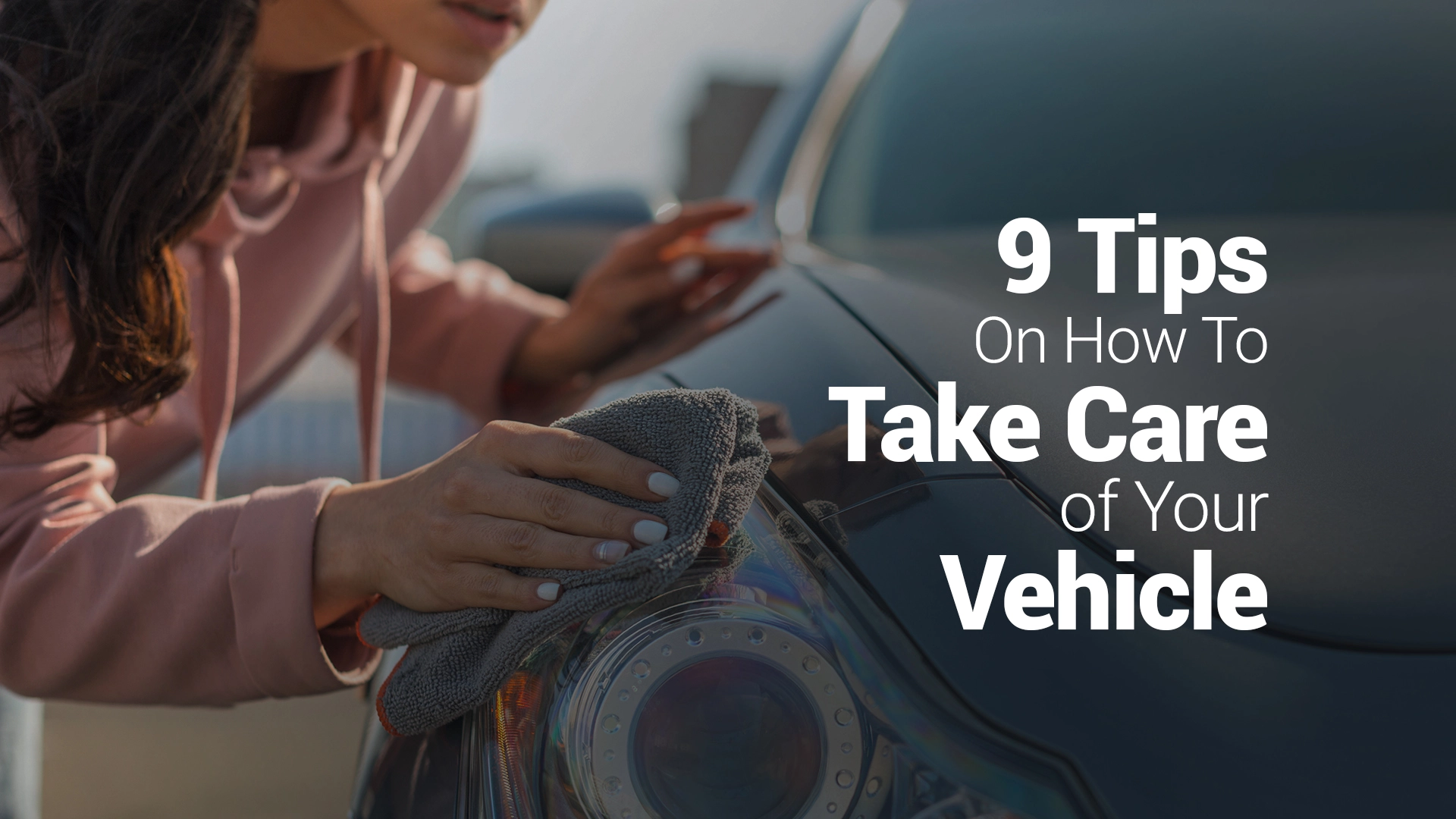
Taking care of a car is no easy feat. Every little thing you do matters and if you want your vehicle to serve you for a long time to come, then this article is for you. In fact, we’ll throw in an easy tip! Head over to Simply Car Mats for a wide range of mats to protect your vehicle’s interior.
Read on for more tips and tricks on car care to keep your automobile running longer.
1. Start Off EasyFor newly bought cars, drive slowly during the break-in period (about 55mph for the first 1,000 miles). Importantly, for the first few hours of driving, acceleration should be kept below 3,000 RPMs. The car should not bear heavy weights yet, whether it's on the roof, trunk, or a tow trailer attached. Finally, leaving your car idle is never good at break-ins as the oil might not spread evenly to your engine.
2. Refilling GasSome dubious gas stations don't pump their filters, leaving car owners with dirty gas to feed their automobiles. Others make weird mixtures in their gasoline, at times even watering it down. The safest thing for your car is to go to a credible service station for gas.
Another tip is to refrain from buying gas if you see a gasoline tanker at the station. When gas is being refilled, the sediments in the tanks are riled up which can block filters and injectors in your vehicle. Soon, you’ll need a repair which is not worth the mistake.
Keep a record of your tank fills and mileage to make it easier to track. This helps drivers notice any issues with the mileage early.
3. When On The RoadIf your vehicle gets stuck in soft grounds, going back and forth repeatedly only creates heat which damages other components of your car. The safer and cheaper option is to call a toll truck. Another tip is to occasionally run your air-conditioning unit in the winter and use a refrigerant. This keeps the AC system from freezing up rendering it useless in the summer.
If your car keys are put together on a chain with other heavy items, it could damage the key ignition over time as you leave the keys in. If you don’t want failed ignition that could get you stuck on the road someday, remove the keys from the chain to make it as lightweight as possible. The last thing you want is to get stranded because you can’t get your car started.
4. When ParkingThe best places to park are in shaded areas. Whether it's in a garage or under a tree, providing shade from UV rays reduces damage to the interior of the car. If these places are not available to you, consider investing in car shades. Car shades come fitted with various ways of adhering to your windscreen and windows.
When stationing your cars for the night, remember to keep the tire valve caps on at all times. They may be small but they function to keep contaminants out, preventing leaks and flat tires. It then follows that when changing tires, you should ensure that the valves are replaced as well.
5. Choose A Good Car InsurerIn the event of an accident, getting good car insurance can be a lifesaver. A comprehensive insurance plan includes coverage for originally manufactured parts and quality repairs. Make sure that the terms of the plan cater to these needs.
6. CleaningWhen washing your vehicle, vacuum first before cleaning it with a wet sponge stop. this minimizes scratches as well as corrosive damage from contaminant liquids. In terms of cleaning detergent, a mixture of mild soap and water will do. When cleaning your dashboard, gently use a moist cloth to remove dirt from the surfaces. The last thing you want is to scratch them, which could block visibility. Car mats are great because they protect the floor of your automobile. You should be gentle in removing them to avoid appalling contaminants on the car floor. Clean them thoroughly before leaving them out to dry. This drying process is critical as it prolongs the life of the car mats.
Meaning of engine is tricky but a necessary step because it not only keeps your engine cool but also makes leaks easier to spot. All you need is a scrub, cleaning products as well as plastic bags to seal off other components like the distributor and electrical parts. If cleaning products sold in stores are unavailable to you, any dishwashing liquid or grease-removing detergents will do the trick.
7. MaintenanceLeather seats are durable and require minimal cleaning. That said, they still do require maintenance such as the removal of contaminants and the application of a topcoat for the leather used in the car upholstery. The topcoat serves as a protectant to resist stains, making future cleaning an easier process.
Both tire inflation and alignment have to be regularly checked. Especially in the heat, tires that are insufficiently inflated spoil, warranting a pricey replacement. Ideally, you should have a pressure gauge to ensure that your tires are sufficiently inflated according to the manual. Wheels that are misaligned can cause difficulties in steering and controlling the vehicle, which will also lead to wear and tear effects on your tires. It is suggested as a guide to having your tires checked once every 30,000 miles.
To prolong the life of the engine, car owners should frequently change the oil in their vehicles so that abrasive materials and dirt are flashed out. Many manuals recommend a less frequent oil change but this would mean that contaminants remain inside the car, causing damages for longer periods of time. Importantly, you should also clean the drain plugs before putting them back as some plugs have magnetic properties that keep metal contaminants at bay.
Lastly, performing monthly checks on the power-steering fluid can not only improve steering efficiency but also prolong the life of the power-steering pump. If the level of power-steering fluid is low, chances are, there are leaks in the hoses and pumps.
8. Protecting The Exterior Of Your AutomobileAnother reason for packing in shaded areas is to protect the paint on the car exterior. The paint not only makes your car look presentable but also prevents rust to a certain extent. Sun rays can be damaging to the paint layer so many car owners opt for a car shade for protection against moisture, dust, and even bird shit. Cracks in your windshield, even small ones, can block vision and even spread if left untreated. The most cost-effective solution would be to get those cracks repaired early on. Speaking of the windshield, use washer fluid instead of water to fill the washer tank. If you think the fluid tank is empty, refill the tank first as continued usage may damage the pump.
9. Battery MaintenanceEven if you've been taught that your battery doesn't require maintenance, it's better to be safe than sorry. Start by cleaning the battery case with a damp cloth and mild detergent. There are guides available online on how to safely clean the battery terminals. While you're at it check the battery case for damages before reinstalling the batteries.
ConclusionOverall, we have provided you with nine tips on how you can maintain your car and prolong its life on the road. Everything from the internal mechanisms like the battery to the exterior factors like the paint has to be considered and taken care of. Well, we understand the complexities of owning a car and we hope that this guide has been useful to you.
Four Tips for Comfortable Driving On Road Trips Info 25-Feb-2021 A Comfortable Driving Experience
Arguably, the worst part of road trips is how it gets more uncomfortable the longer you’ve been in the car. If you’re the driver, it can be infinitely worse. To have a great trip, it’s important to have a comfortable drive! And, there are many ways that you can improve your driving experience. You can use gadgets, backrests and many more to improve your car’s comfort. Take a look at BMW Car Mats for the best car mats to rest your feet on. Ergo, in this article, I’ll be talking about the top four tips and tricks for making your driving experiences better.
1. Making Your Seat More ComfortableOne of the biggest discomforts when driving is your seat. Soft cushions are great at first. But past a few hours and it’ll feel like you’re sinking into the seat. It simply becomes too uncomfortable after a certain number of hours. In particular, you might suffer from lower back pain and this can greatly affect your mood. Even after you’re done driving, your body will still be aching and often, you’ll want nothing more than to collapse into a bed and rest. This isn’t ideal if you’re just starting out a trip. So how can you make your seat more comfortable? Well, there are a few options!
As mentioned, soft cushions aren’t great for long trips. If you have soft cushions, you can invest in a cushion for more lumbar support. Such cushions can be easily found and fitted to your car seat. These cushions will then help by keeping your spine in a better position when driving. It then means that you’d have lesser back pain. These cushions are also washable and that means you won’t have to use the same sweaty cushion every drive. Instead, you can take it out for a wash whenever you like! If you choose to get a cushion like this for yourself, you should look for memory foam cushions. These will mould themselves to your back and be perfect for you!
It seems obvious but your driving position plays a big part in ensuring that you’re comfortable. Slouching is a big no-no and it can quickly cause back and neck pain if you do it. Instead, you should always sit straight up against the car seat. However, this can be difficult if you are too tall as you’d inevitably have to slouch a bit. If that’s the case, you can try to keep your head back against the headrest too.
When it comes to your legs, you’d want them supported too! If not, you’d end up with both back and leg pains. Therefore, try to sit such that your legs are parallel to the road. Don’t have your thighs at an angle. Your knees should not be higher than your backside either. This will put a strain on your lower back and cause back pain. Try to ensure that they aren’t.

Backseat passengers often can’t lower their seat and have much less space, as such, they may often have their knees higher than the backside. As a result, they often end up with horrible lower back pain. Unfortunately, there is little you can do to improve the back seating. There are only two options to improve passenger comfort. Firstly, take frequent breaks. This ensures that passengers can get out and stretch their legs. This can help prevent or alleviate back pain. Secondly, don’t let anyone hog the front passenger seat. Let everyone take frequent turns sitting in the front so that they can sit upright and stretch their legs out a little more.
2. Insulating Your Car Against Outside NoiseAnother annoyance on car trips will be the ambient outside road noise. It may be negligible at first. But with all things, as the hours go on, it quickly becomes an irritant. Thankfully, there are many different ways you can insulate your car from outside noises. Here's a list of the best options:
An absolute need when on a long car trip is music. If you want to play your own music throughout the trip, you’d need an audio jack or a Bluetooth receiver. Both of them would allow you to connect your smartphone to your car to play music. Additionally, you would also want an in-car charger because your phone is bound to run low on battery. If you need your phone for navigation, you might also want to get a mount to hold your phone up.
If you’re travelling with kids, other great accessories would be an iPad headrest mount. This can serve as a placement for your kids’ iPad. You can then play movies or cartoons on it for them to watch. A travel tray is another great idea as it can serve as a place for your child to play with his toys on. Or they can do colouring on the tray. Lastly, window shades would be a great idea too as they can protect them from the sun.
4. Taking Frequent BreaksBreaks are an important way to keep everyone in the car sane. Getting out of the car and moving around will help to ensure everyone doesn’t end up with aching backs. If you have children with you, this is also important as they’d need to expend some of their energy. Therefore, a good gauge is to have a fifteen-minute break every two hours. During these breaks, always remember to use the toilet, stretch and move around. If you stop at a gas station, it would be a good idea to get snacks too!
 Conclusion
Conclusion
Road trips are meant to be a fun time. With these tips, we hope you can make your road trips more comfortable and hence, turn them into enjoyable experiences with family or friends.
Everything You Need To Know For Cleaning Car Floor Mats Info 23-Feb-2021 Why Floor Mats?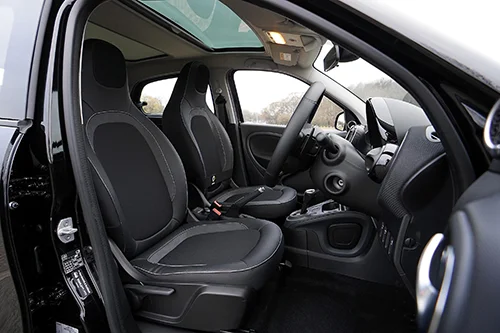
One of the best investments you can make is to purchase your car. The freedom and independence that comes with it are on a whole new level –– you’ll never need to squeeze in crowded trains, and worry about carrying loads of stuff. Cars are great, but they require regular maintenance work to maintain proper hygiene and cleanliness.
Unfortunately, no matter how hard you keep the interior squeaky clean, dirt accumulates and spills are bound to happen. Car floors often hold more of the grime than anywhere else; it’s subject to dirt from footprints, loose debris from bags, and occasional food and drinks spillage. Take a look at your car floor mats now –– if you haven’t cleaned them yet, you should get down to it as soon as possible! Here’s how you can save money on professional car washes, and do-it-yourself. And if your car mats are beyond saving? Replace them at Simply Car Mats.
How To Clean Floor MatsBefore deciding to begin cleaning your car, here are a few steps that you should take first.
Decluttering is a great way to remove the garbage, dispose of unwanted objects, and organize the items in your car. Before you begin removing the mats, ensure that there is no external rubbish that might hinder your cleaning process –– this way, you’ll have greater visibility in seeing any dirt and stains found on the carpet or floor mats.
Do remember to remove the floor mats before you begin cleaning them! There are some areas of the car that water should not touch (such as the brake and clutch pedal), hence you must avoid risking them getting wet or soapy whilst cleaning the mats.
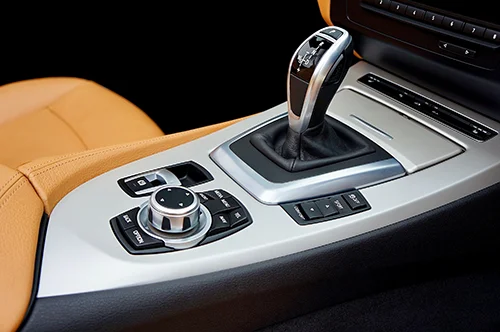
Different floor mats require different types of car cleaners. The best way to know for sure which car cleaner is suitable for your car is to check the material of the floor mat at a hardware store. For rubber floor mats, you’ll require laundry soap, baking soda, and vinegar; if you have a carpet floor mat, a car carpet cleaner would suffice.
It’s important to choose the correct brush style for scrubbing your floor mats, as you want to ensure that your cleaning removes the stains and germs residing within it. We recommend purchasing a brush that is compact and has a sturdy handle, as it would help to give you ample control over it to reach the corners and crevices of the mat (especially if it is made of rubber or plastic).
Once you’ve successfully cleaned your floor mats, it won’t be nice to place it on a dirty and stain-filled carpet, right? Take the extra step to clean your car’s carpet; I promise you that it’ll be worth it! This can be done by vacuuming the carpet to remove any external crumbs and rubbish and using a car carpet cleaner to rinse off any stains and grime.
Step-By-Step ProcedureOnce you’ve prepared and gathered the materials you need, it’s time to get down and dirty with the car mats. However, do bear in mind that car mats made of different materials would require different cleaning techniques.
Before cleaning carpet mats, remember to remove them from the car interior. Lay them down on a flat surface, and begin by using a car vacuum to extract all the dirt, dust, and crumbs from both sides. It’s important to not rush this process, as you want to ensure that the mats are dust-free before rinsing them with water.
Once there is no more external dust left to vacuum, use a carpet cleaning solution to spray on top of the mat. If you don’t have a carpet cleaning solution, plain white vinegar is good enough to kill all remaining bacteria and germs residing within the carpet. Don’t worry if there is a sharp or pungent smell from this –– once the carpet is left to dry in the sun, the sour odour will naturally go away. Remember to spray this only when the carpet is dry!
After you’ve finished spraying it with vinegar or cleaning solution, use a brush to remove the residual salt and stains. Please take extra precautions when scrubbing, as you don’t want to ruin the carpet material by applying too much pressure. Repeat this step until all the salt and stains have been removed to the best of your abilities.
Lastly, rinse off the vinegar and dust that have been lifted off by the brush. Hose it down with a high-pressure nozzle, so that the dust can be pushed out of the car mat. Once every part of the carpet has been hosed and rinsed, let them dry under the sun.
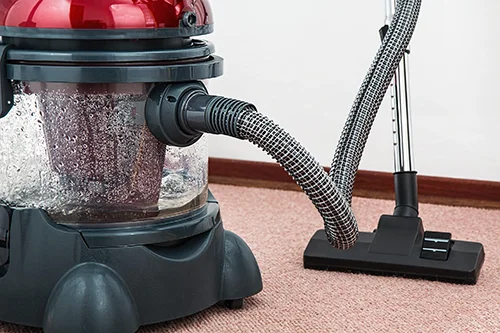
Begin by removing the floor mats from the car interior and laying them on flat ground. Next, use a high-pressure hose to rinse off the external dust and grime from these mats –– you don’t want your brush to touch the dirt directly!
Instead of using a cleaner or vinegar, rubber and plastic mats require scrubbing with basic soap and water. Plus, because it’s made of rubber or plastic, you’re free to scrub as hard and as long as you want! Maximize the brush to clean every crevice and corner of the mat, and ensure that all the dried-up stains have been removed. Alternatively, you can opt to spray vinegar on the mats to kill the bacteria –– just remember to dry them out in the sun, and the strong odour will naturally dissipate.
Once the mat has been scrubbed thoroughly, rinse it again under a high-pressure hose to remove any residual soap or dirt. Repeat this step until there is no visible dirt or grime left on the mat. Lastly, you can opt to sun dry them or use a microfiber towel to wipe them dry.
Stains will always be inevitable, regardless if you have carpet or rubber floor mats or not. However, fret not –– cleaning long-term stains may be easier than it looks. Mix baking soda, liquid dishwashing soap, and vinegar in a spray bottle and apply it to the part where the stain is at. Let it sit for a few minutes, then use a microfiber towel or brush to wipe the stain in a circular motion.
If you’re dealing with stubborn grease stains, you’ll want to opt for paint thinners instead. Firstly, apply a small amount of thinner on a clean towel and gently wipe the stain off. Next, place salt over the stain to absorb the external oil. Leave it there to dry, and vacuum the residue up after a few hours.
Alternatively, if the mixture is still too mild for the stains, you can opt to purchase a carpet cleaner from the hardware store. Most of the time, these carpet cleaners should be able to remove any stains.
ConclusionCleaning your car can be seen as fun, or as a chore; it depends on how you look at it. Why not take some time off this weekend and prepare your cleaning gear –– you’ll be surprised at how cleaning can work wonders for your car!
Five Easy Steps To Dry Wet Car Carpet Or Seats Help 21-Feb-2021 Introduction
Sometimes we make oversights and end up with a thoroughly soaked car in a torrential downpour. The natural conclusion to come to is that it will be a difficult task to get both the car carpet and seats dried properly, but fret not. This article will go through the best techniques as well as the steps to carry out to get your carpet and seats fully dried in no time. And if you’re wondering where to get the best car floor mats, be sure to check out Simply Car Mats.
Here are five simple steps to get your car interior dry as quickly as possible.
Firstly, it is advisable to remove all the floor mats in your car. Then, you can start vacuuming the carpets and seats using a normal home vacuum cleaner. Next, you want a clean towel on hand to absorb the excess water. This can be done by pressing the towel gently into the soaked areas, letting the towel do its job. For carpets, lift them and mop up the excess water that has accumulated below with another clean towel. Lastly, it is best to air out the interior by allowing all car doors to remain open. This will increase the chances of the interior drying faster. For better results, bring in fans to directly blow onto the front and back row of the car.
Do take note that rainy weather is not the sole reason for your interior getting soaked. Driving into puddles on roads and having a leaky car part can also contribute to your car interior becoming drenched. Next, we will be sharing some useful ways to ensure that your car interior remains moistureless and smells as fresh as new.
Generally, it takes about one to two days for seats to be completely dried. This is in cases when they have been entirely drenched through to the inside cushion. The drying process can be quickened in a couple of ways. For example, by parking your car inside such as in a garage where there is less moisture, and having the doors remain open with fans blowing continuously. An alternative way is to have a dehumidifier running while your car dries in the garage.
As mentioned above, carpets and seats can take a long while to dry. However, you can try to speed the drying process by supporting the carpet onto a ledge where a fan can be slotted below to blow directly. If there is no fan on hand, using a hairdryer is more tedious but will still get the job done.
You may be wondering how your car floor gets wet when it starts raining. This happens typically when a window is left half-open when it rains, allowing the rain to soak through the floor. However, if all the windows are closed when it rains but your car floor is wet, it might be a sign of a leak in the exterior of your car.
Follow where the wet spot is to find out where the leak might be located at. It is best to identify where the leak comes from before the wet area completely dries. This will allow you to repair the leak before your car interior gets even more damaged by moisture.

The following are examples of interior and exterior leaks.
If the wet spot is on your car’s floor after it has finished raining or if you have just gone through a car wash, the chances are that the leak is in the door or window seal, or you have a sunroof seal that has gotten loose or spoiled. Check the door frames thoroughly and you will be able to understand the severity of the problems in your seals.
Exterior LeaksIf you find small puddles of water on your car dashboard, there might be a loose seal on the windshield. On the other hand, if the puddle was found near the boot area, the leak could be caused by a faulty hatch window seal.
Places to check regularly in your car would be the plastic or foam right behind the door panels. Take note of any signs of condensation on the panels, or any small frissons on the membrane. For door seals, inspect for any damages or signs that it may be on its way to rotting. The rubber edge at the base of the car window should be undamaged and fit closely against the interior and exterior of the window. As for the sunroof seal and drainage gutter, it is important to scan for any cracks and blockages. Lastly, for the windshields and seals on hatch windows, check if the rubber has shrunk or cracked, and monitor if the rubber is still snugly fitted against the glass.
Interior LeakIf your puddles happen to gather on your car’s interior even when your car has not come into contact with moisture on the outside, there could be a chance that you have an interior leak. This is most commonly found on the floor in the front row and can be a result of a malfunctioning heater core, air-conditioning system, or even the cabin air filter.
In such scenarios, it is advisable to examine your heater core to see if water has puddled onto the floor of the passenger seats. You should also examine if the liquid has a slightly sweet odor or tint. It is most likely a coolant leak from a rusty connection if it is. The air conditioner should not be clogged as a clogged gutter can cause water to overflow and a leak to happen. Lastly, an air filter can easily cause leaks as well if it is not fitted snugly, or if the lid has become loose over time.
After identifying where the leak in your car has stemmed from, here are some useful products that can help to aid the drying process. These include heavy-duty fans and extremely absorbent cloth towels. Keeping such towels in the glove compartment can save you on literal rainy days.
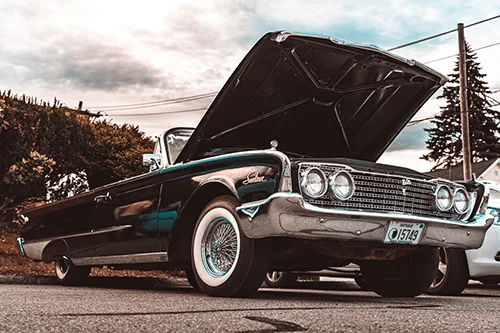 Conclusion
Conclusion
Now that we have understood the drying process for carpets and seats in your car interior, you can apply the tips we have learned in this article the next time your car gets wet puddles all over its floor again.
Reasons To Invest In Quality And Customised Car Mats General 19-Feb-2021 Introduction
When you first get your new car, it is important to invest in protection for its interior. We are talking about floor mats - they have to be of high quality to ensure that the interior of your car is well insured and protected against spills and stains.
The few main reasons why car mats of quality, such as Simply Car Mats should be considered are firstly, they do their job in ensuring your car maintains a state of cleanliness; secondly, car mats keep your new car looking new and protected; thirdly, it provides a sense of comfort for the passengers; lastly, it elevates the look and personality of your car. We will also be going through the differences between cheap and better quality car mats, as well as why you should not scrimp on them.
1. Maintaining your car’s cleanlinessA car mat essentially protects your car from the various kinds of dirt you bring in on the sole of your shoes. The better quality the car mat is, the more efficient it will be at getting the job done. This will allow you to drive with one less worry about the interior of your car being damaged.
Bad weather such as rain and or snow can bring forth a ton of dirt and sludge into your car. Car mats are specially manufactured to prevent such dirt from accumulating and spoiling your car interior.
2. Protecting the entirety of your carAlthough cars already come with inbuilt mats, you have to be doubly sure that your car is protected in its entirety. To do so, it is advisable to cover your flooring with another layer of car mats. Cars that are not adequately protected can face ruin and wear and tear much faster and will leave your wallet with an even bigger hole.
3. Passenger ComfortAnother important reason for car mats is that it elevates comfort levels for both the driver and the passengers. Regardless of summer or winter, car mats are there to accompany you in comfort throughout your drive. It is also best to consider having a properly sized car mat that will suit your vehicle’s dimensions.
4. Car Aesthetic and LookCar mats do not just protect your car from becoming extremely dirty, they can also add a touch of personality and aesthetic to your car’s look. Regardless of whether you are using mats to protect your precious new car or to improve the interior end-result look, car mats are a great investment that will not disappoint.
As mentioned above, there are a couple of considerations when it comes to car mats and it is advisable to be sure of what your requirements are. When it comes to Material, it is best to choose quality mats that are fuss-free and simple enough to clean, such as rubber mats. Rubber mats can be conveniently bought from your local departmental store or even more accessible, through online shopping. We recommend buying brand new car mats instead of used ones and depending on the size of your car, it is vital to think about which mat will let you achieve the benefits you are aiming for. Most importantly, consider the affordability and durability aspects of the mat. Lastly, always make sure that you choose a mat that has a warranty so you can replace a problematic mat without much issues.
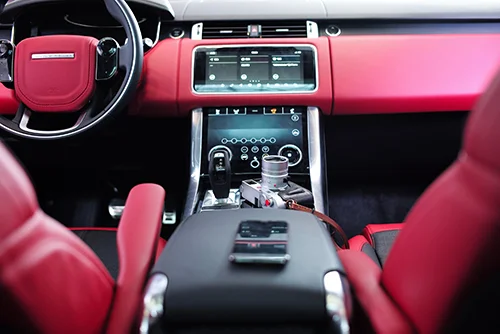
On this note, we will be exploring the differences between cheap and better quality mats, as well as which is more advisable for you to purchase.
Car mats are one thing you should not be scrimping or be stingy with your money on. It is implied that although improvements to your vehicle may seem subtle and lowkey, floor mats play a pivotal role in both protecting, as well as bringing forth quality and look to your car. This can help to increase the resale value when you wish to sell your car. It is also a good way to enable your car to continuously look brand new.
Floor mats that are customised are designed with your vehicle’s configuration in mind, and therefore will fit your car to a tee. Here are some factors to consider when choosing between both types of mats.
If the Quality of the mat is what you are focusing on, universal floor mats may be ignored. Although slightly more pricey, customed car mats make use of higher quality materials that provide strong durability. On the other hand, the typical car mats will showcase signs of wear and tear more quickly due to the cheap material they are made from. Hence, for a lasting ideal solution, consider purchasing a custom car mat.
Next, you can witness the vast difference between the cheap and expensive option by looking at the Fit of the mat. Your usual car mat will come in a couple of fixed sizes and are manufactured to fit the majority of the cars. Hence, they may fit, but not perfectly. Car mats that are customised, however, are specifically designed to mold to the shape and outline of your car. Thus, you will not be seeing empty spaces or overlaps in the mat. This gives an extra layer of security to your mats, and prevent liquid and more dirt from becoming trapped.
If you are someone only focusing on the Cost, well not to worry. The everyday floor mat should be sufficient for you considering how they tick both affordability and basic functions. Although floor mats that are custom made are more unfriendly on your wallet, it is not without good reason considering how much effort and time is put into finalising the fabric types and manufacturing to the most accurate measurement of your car.
For those with a little lee-way in their expenditure, we suggest going for custom floor mats in the beginning when you get your car. This will provide you an adequate solution that will work for you long-term, without you worrying about having to get it replaced every few months.
 Conclusion
Conclusion
After understanding how important car mats are to your car, and why car owners should go for the more expensive, customised option, it is time for you to make good use of the information you have gleaned and work towards giving your car a more suitable car mat.
Ways To Clean Car Mats Help 17-Feb-2021 Introduction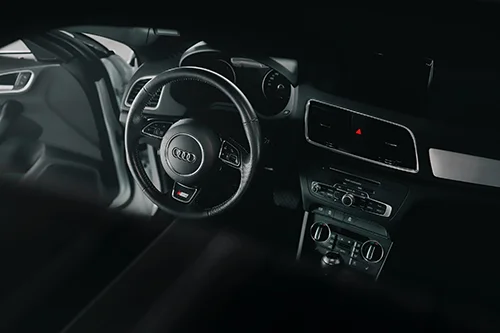
You may be extremely proud of your spanking clean car. However, best believe that your vehicle is only as clean as it looks on the outside. Car Mats do their part in making sure that the gravel and grime particles you carry into the car on the sole of your shoes do not destroy your car’s flooring. Additionally, they also function as a safety mat when you inevitably spill drinks or food crumbs in the car.
This article will guide you in a variety of ways on how to clean your car mats properly, no matter what material they are made of.
PreparationBefore you start the cleaning process, it is important to prepare the mats. You can do this by shaking out the dirt and gravel from the mats to smoothen the process of washing. This can also help to prevent your job from becoming more tedious while you are scrubbing them clean.
VacuumingAlways remove the mats carefully enough from the car such that no sand or particles will spill by folding them into half before bringing them out. If possible, hit the mats against a hard wall or floor to remove the dirt that has rooted itself in the mat threads. Vacuuming can be done together with an attachment that is suitable to clean upholstery. Such carpets can also withstand high-powered vacuuming, which can easily found at your local car wash outlets.
Quickest way of cleaningThe most common type of mats seen in cars are rubber mats, which combats the various types of dirt rainy and snowy weather will bring. For terribly dirty mats, the most efficient way to clean them is by scrubbing at the surface side using a concoction of laundry soap and baking soda mixed with warm water.
If your mats are not extremely dirty or grimy, light cleaning involves merely hosing them down using a garden hose and drying them off in the sunniest spot you can find.
Washing-Machine CleaningIf you find cleaning by hand too time-consuming and wish to let your washing machine do the job for you, bear in mind that you can only throw your car mats in only if they are manufactured from pure carpet material. Mats with rubber or plastic components or fibres in them should be strictly cleaned by hand.
To be fully certain that your car’s mats can be machine-washed, it is advisable to follow the care label usually stitched onto the mat. A general rule of thumb is to place the mats into the machine with the usual laundry detergent and wash them on a gentle cycle with cold water.
Deep-cleaningFor carpet mats, the traditional soap and water method may be more efficient in thorough cleaning. Otherwise, you can follow this cleaner recipe to get the job done quickly.
All you need to do is mix soap and water in a bucket before using a brush to scrub the surface side of the mat. Remember to take gentle care in removing dirt and mud from the threads. After scrubbing, hose them down with clean water to rinse off the solution and lay them to dry on their own.
Keep in mind that to dry efficiently, car mats should be placed in a location with optimum sunlight. To waste less time, a vacuum can be used to remove excess water in the mats.
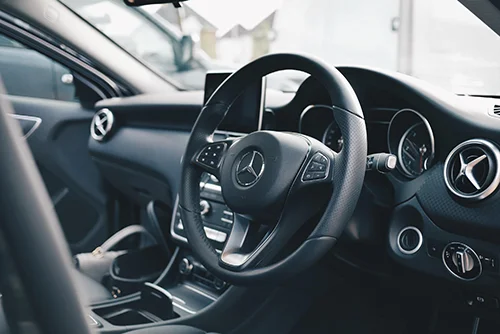 Steam Cleaner Cleaning
Steam Cleaner Cleaning
Steam cleaning is a more targeted method to clean a floor mat, as it does its best to fish out dirt and remove bad smells. Steam cleaning can be applied to mats made of mostly fabric or carpet.
To start, the existing debris and dust are vacuumed while the mats are laid on flat ground. Next, add the cleaning solution to your steam cleaner and attach the brush. Clean each mat in a top to bottom direction methodically, and repeat for each section. To make sure that no inch of carpet is left out, move the brush attachment in an overlapping manner. Mats should be fully dried before they can be replaced in your car.
Vinegar cleaningAnother carpet cleaning solution that is suitable for removing stains would be using vinegar. To prepare, mix one cup of white vinegar and water in a spray bottle. Shake well before using, and make sure that each mat is sprayed thoroughly with the solution. Vinegar is a good alternative for cleaning solutions and is easy and convenient enough for you to make at home when you urgently need one.
Removing StainsAccidental oil stains can look disgusting and offensive on car mats, however, they can easily be removed with this recipe. To start, absorb as much of the oil spill as possible with a cloth, then mix water and vinegar in a spray bottle together with detergent. Shake to mix the solution well before spraying it directly onto the stain. Use a sponge to scrub gently at the stain in an inwards circular direction until it disappears.
Removing OdorsSometimes, your car mat is clean but it emits a lingering odour from past takeaway orders. Baking soda is your best friend in such cases, as it acts as a deodoriser and removes putrid smells from carpets. Scatter a handful of baking soda onto each mat’s surface, and use a brush to gently root the baking soda into the threads of the mat. Let the baking soda absorb the lingering odours, then vacuum up the powder after 20 minutes.
DryingIt is essential to avoid moisture and water from accumulating in your car mat. This can lead to mould growth and we want to avoid that as much as possible. Therefore, one of the most effective ways of drying your car mats is to hang them on coat hangers in the sunniest location you can find. By securing the mat to a hanger with clothespins, both sides of the mat will be given ample sunlight to dry off quickly.
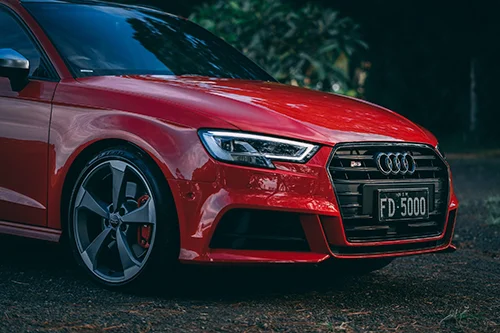 Conclusion
Conclusion
Now that we have gone through the most effective ways and methods to clean your car mats, you can analyse your car mat’s conditions to determine the best recipe for you to work with. Be prepared to proudly boast about your clean car - this time inclusive of its interior!
How To Prevent Your Car Boot From All Kinds Of Damages, Dogs Included Help 15-Feb-2021 Introduction
As a general rule of thumb, the more you use your car boot to store things, the more frequently it becomes dirty and filthy. Hence, an often-used car boot has to be cleaned regularly. In this article, we will be showcasing to you what you can do to protect and maintain your car boot’s cleanliness. Do even consider getting Car boot Liners to keep your boot in top condition.
Protecting your car boot from dog hairNeedless to say, you have to remove the hair before you begin cleaning. This can easily be done by giving the whole boot a decent round of vacuuming. For better efficiency, you may want to use a hair removal brush for dogs. For those nooks and crannies no brush can reach, one way is to tape your hands up and pick up the loose dog hair.
Next, you may want to invest in a lining for your boot. These boot liners are specifically manufactured to fit every type of car model there is and are made from durable and waterproof PVC material. Most of all, these are simple enough to clean with water such that it will only require a few minutes. Boot liners can come in generic and/or custom. Generic being they fit every type of car imaginable, and custom being they are tailored to fit your car’s specific measurements.
In preparation for a dog-ready car, you may also want to create more space by folding the back seats down.
For bumper protection against the inevitable scratches from dogs or even worse, muddy paw prints all over your shiny exterior, bumper flaps are also available. This flap is attached to a loop at the end of the boot liner and can be easily kept for convenience when not in use.
If you have bigger canines that tend to drool everywhere in the car, a Rear Seat Flap will help with the issue. This is placed on the top of the seats and will flop over to cover and protect the headrest. Say goodbye to drool-filled headrests! A tollgate cover would also work wonders for the pets that always have their bum pressed against the boot door.
If you have a dog, you would know that dog hair goes everywhere. Thus, knowing how to rid dog hair from your hook and loop fasteners is important. Firstly, use an anti-static spray on the fasteners - this will make sure that they do not get covered in hair. The lint roller is your best friend, especially when hair has accumulated. You can also use a tweezer or even duct tape and a toothbrush. Use the spray after to prevent repetitive incidents of hair accumulating.
For families with pets, you would be familiar with the lingering smell of them in your car. To counter the lingering muddy odour or even wet sand, use an odour mat. The material made of quilt allows maximum comfortability for your pet to snuggle on, while at the same time absorbing the unwanted putrid stenches.
Getting rid of smells from the car boot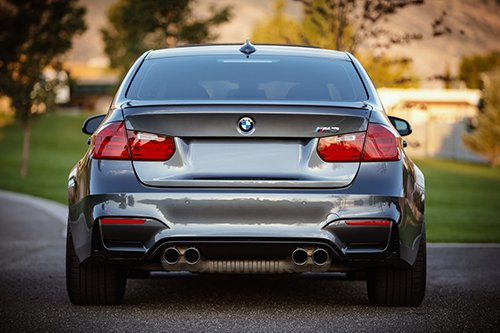
Since we are on the topic of smells, bad stenches are probably one of the most difficult and tedious things to get rid of. Once a lousy stench stays, it stays and tortures you until you remove it. Hence, although it is good practice not to drink or eat in the car, there are still occasional instances where incidents occur and you are left with your car reeking. The most common way to deal with them is by using air fresheners, but these can only last so long.
For a solution that will work long-term, the most important step is to act fast. Do not wait until the entire car reeks before you do something about it. As mentioned above, getting an odour mat can help to absorb any unwanted stenches from accumulating in your car boot. Best of all, they can be conveniently cleaned just by throwing them in the washing machine.
Next, we will be guiding you through a couple of easy steps to make sure your car boot is clean. It is advisable to clean up spills immediately, as the smell will only spread to other parts of the car.
Firstly, vacuum your boot thoroughly and make sure that food crumbs and or rubbish that has rooted themselves into the threads of the mat has been removed. Besides the stench, such garbage in cars attract pests as well. Next, use a wet and dry vacuum to remove any excess moisture and mould. This is especially vital if you are a sports person and always have fishing rods and or bikes in your boot. Any moisture that speeds into the carpet mats will give off a musky odour.
Secondly, using a hardy stain remover can help combat overwhelming smells. These can be bought from any local supermarkets. Simply spray directly onto the areas needed and smear gently. Take advice not to rub the fabric roughly to dissipate the remover as the odour can seep further into the threads. You should leave the stain remover for the suggested time as stated on the packaging for maximum effect.
Thirdly, if all else fails, hire someone professional to help clean your car. Their expertise can help your car regain its clean status, as well as remove the smells entirely.
Protecting your bumper from scratchesIf you regularly load heavy equipment or items in your car or even bring your pet for drives, you will need to make sure your bumper is insured and protected. Pets claws can scratch the bumper easily when they are being transported to and fro from the boot. Heavy objects can also unknowingly scratch the paint off or worse, create dents in the bumper.
To protect your bumper, the best way to protect your bumper is to spread a towel over it. However, laying a towel can easily cause it to become dirty and stinky over time as they soak up smells from the boot.
 Conclusion
Conclusion
Now that we have gone through the many different ways of preventing your car boot from becoming damaged, you can rest assured that your car boot will be well protected the next time you bring a pet out for a drive, or when you load heavy things into the car boot.
Finding The Best Floor Mats Or Liners For Your Vehicle Help 13-Feb-2021 Introduction
Introduction
If you’re considering getting something to protect the floor of your vehicle, like Audi car mats, we can help you decide whether you should get it and what type you should invest in. While floor mats and floor liners are incredibly useful for any vehicle, they have some differences which will be addressed later in the article. Floor Mats or Floor Liners?
Yes, these are different things. While floor mats are flat, more affordable, and only provide partial floor coverage, floor liners have a raised edge which has to be custom made most of the time. The latter can also be custom-fitted to the vehicle boot or floor of the rear seats. While both are great for preventing damage to your vehicle floor from dirt or scratches, floor liners are better for containing any liquid spills.
Now let’s compare the two options in terms of types, installation, and maintenance.
TypesThere are three types of floor mats; carpet, rubber, and thermoplastic elastomer (TPE). Carpet floor mats are probably your best bet if style and comfort are your first priority. Its downside includes the fact that it gets dirty quickly and washes out slower. If you have kids onboard the vehicle, you might want to steer clear of this material. Next are the more stain-resistant rubber floor mats. They clean easily and are more affordable than the carpet. It is also available in a universal fit. This is, however, like a double-edged sword as that results in lesser protection from spills. Rubber floor mats also do not do much for style as it comes mainly in brown or black. Finally, we have TPE floor mats which are a mixture of plastic and rubber. This material makes for a bendable floor mat that is easy to clean, hard to stain, malleable, and extremely durable. They can also take a lot of harsh treatment from users or from the weather.
There are four types of floor liners, all of which are plastic and rubber mixtures which makes them completely waterproof, malleable, and temperature-resistant, which means they retain their shape even in drastically cold or hot weather.
The first type is TPE, which you already know by now. TPE floor liners bring all the benefits that TPE floor mats have. Then we have Thermoplastic Olefin (TPO) which has a filler component on top of the plastic/rubber hybrid. TPO floor liners are resistant to radiation from UV rays so heat from the blazing sun won’t be an issue. Next up are the Polypropylene (PP) floor liners which provide solid protection especially against chemical solvents. It is hard and resistant to heat as well. It has a slippery surface which makes cleaning easy but becomes an issue when it gets wet. It is also prone to oxidation which turns the floor liner a chalky white after time. Finally, the Polyethylene (PE) floor liners. These are very tough and inexpensive at the same time.
InstallingWhether it’s floor mats or floor liners, it is vital to remove all old floor covers before installing new ones as it becomes a safety hazard should the new mat slip on the old one and interfere with the pedals. Clean the surface and make sure there isn’t any dirt or debris.
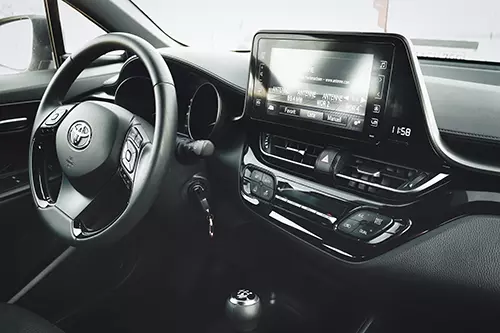
For floor mats, all you have to do is follow the instructions for installation. Typically, the floor mat on the driver’s side has a cut-out for the gas and brake pedals while the passenger side is simply a rectangular shape. Some sets come with an additional double floor mat for the rear seat which you can simply place on either side. As mentioned, it is crucial that your floor mat doesn’t interfere with any pedals or clutches. To prevent slipping, some floor mats have a hole with a metal ring to be placed around a hook on the floor of your vehicle. This might not be true for all floor mats as others employ different non-slip technology. Make it a habit to check that your floor mats are in the right place every time you exit your vehicle.
For floor liners, you want to remove any stickers from the liner. Safety labels can be removed and placed in your manual. Once you recognise which slide the floor liners should be applied, install them with the hooks either attached to the liner itself or provided with it. Conduct a similar check to make sure no pedals or clutches are being blocked.
MaintenanceFloor mats should be as durable as your vehicle. It is, however, recommended that you occasionally remove them for a thorough clean. Carefully take them out so that none of the dirt or contaminants spill onto the floor of your vehicle. Use an industrial-grade vacuum to remove the dirt from the vehicle floor for added measure. For rubber and TPE floor mats, simply wash them with water, use a vehicle interior cleaning liquid and a brush to scrub the mat before rinsing them down. For carpet floor mats, use a carpet cleaner and follow the cleaning directions. Vacuum any debris left out by the carpet cleaner. After the cleaning is done, let your mats air dry before placing them back in the vehicle.
Floor liners have a slightly easier cleaning regime. After removing the floor liner while being careful not to spill any dirt in your vehicle, spray it down with some water. Then using a sponge, cloth, or brush and some normal soap like dish detergent, gently go over the entire floor liner surface. Avoid using cleaners that are too harsh or rough. Wash the liner with water and let it air dry. Alternatively, you can use a towel to dry it. Then place them back into your vehicle and ensure that it is attached with the hook and that it doesn’t block the pedals or clutch.
ConclusionNow that you know everything about floor mats and liners, you can make a decision on one of them. The installation and care process should no longer come as a surprise to you when you eventually receive your floor mats or floor liners. We do recommend floor mats and floor liners from Weathertech as well as Husky based on their quality, affordability, and reviews. Of course, at the end of the day, it’s really up to you and your needs. Knowing what you know now, you can rest assured as you hunt for the best floor mats or floor liners for your vehicle that it will be a well-informed choice. Good luck on your hunt!
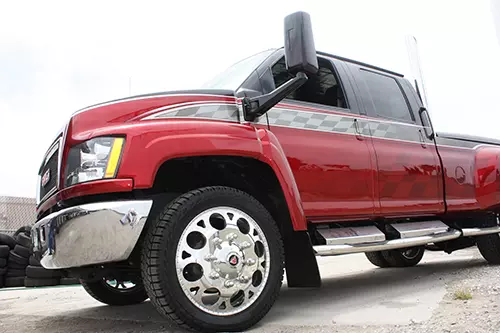 The Best Cars To Drive On And On
General 11-Feb-2021
The Best Cars To Drive On And On
General 11-Feb-2021
 Introduction
Introduction
Unless you’re a handyman who flips cars professionally for a living, you might have to consider investing in a car that is capable of going 300,000 miles instead of tinkering around with car parts. Of course, you can still choose to do so, but many experts have concluded that you would just end up spending the same or even more replacing parts.
Just for context — 300,000 miles is the equivalent of 12 rounds around the world. It is definitely a very complex procedure to get any car to even get past 100,000 miles without the necessary vehicular specs, engine, motor, and more. This is why we have shortlisted a bunch of cars from around the globe that won’t let you down. Let’s rev up the engine and get started! And Click here to check out some cool car accessories for your new ride!
1. The Toyota Land CruiserPowered by diesel, this mean machine will go laps around the planet without any difficulty. Just like its name, it cruises around without any hesitation. Newer models made after 2006 are equipped with more features and amenities to add even more to this already-dynamic car. This is definitely a go-to choice for anyone looking to go for miles and still have a reliable car.
2. The Toyota HiluxYes, you read that right. It is another Toyota on this list. It is just too good to skip! It may be an old model, but it is unblockable and will go on for eons. If there is such a thing as too durable and reliable, it would certainly be on this car’s Tinder bio.
3. The Lexus LS400Don’t let this car’s basic build fool you — just like the Hilux, it is tough to destroy and lives up to its mother brand’s prime feature: reliability. It works forever with regular maintenance and has been reviewed to be the best car to count on. Lexus does constant and detailed testing with each car they put out in the market, so you know you’re getting the best of the best.
4. The Ford Crown VictoriaIf you have watched any American retro drama, you’ll recognize this iconic car. It’s the house brand for the typical American taxis, private-hire cars, and police cars. That’s enough credibility — because why would anyone give the police any less anyway? It revs up and goes along without a second to spare, is reliable, comfortable, and has the endurance for any car owner.
5. The Mazda MX-5If you want something a little bit more flashy, Mazda MX-5 does the job fine. It’s lightweight, carries only two passengers (including the driver), and sports the typical lux look. The Mazda MX-5, also known as the Miata, is a convertible that has the best endurance. After all, they don’t call it the Roadster in Japan for nothing. It performs well in any type of weather condition and makes you feel like a professional racer. Oh, and just to add: 300,000 miles is a walk in the park for the Mazda MX-5.
6. The W123 Mercedes-BenzIn this era, we’re starting to see the return of vintage items like analog film cameras, vintage fashion, and decor. Why wouldn’t vintage cars make a comeback? Well technically, the W123 never really left, because it can’t. It is definitely a car that is here to stay for a long time, just because it lasts for a long time. You do not even have to break the bank for this model, you could get it second-hand and still be assured that this machine’s still got leftover miles for you and the next owner.
7. The Volkswagen Type 2Still on that vintage flashback? Well, hold on because we are still on that page. Kombis and Camper Vans are more than just part of hipster cafe decor— these gentle giants actually go for millions of miles. They may cause a bit of a ruckus, but they’re just really good at getting everyone’s attention. This vintage marvel of a car doubles as a rest space and a vehicle, so why not travel in style? If you are going to do a road trip, you might as well do it with a spacious and capable vehicle anyway.
 8. The Volvo P1800
8. The Volvo P1800
This car goes on for literally millions of miles. This dinosaur was manufactured in the ‘60s and was running for about 600,000 miles before anyone even thought to rebuild its engine. And when they did, it has been recorded to go on for a couple million more. See the hype about these vintage babies yet?
9. The Air-Cooled Porsche 911Sure, they’re expensive, but they’re known for hitting 500,000 miles easily with minimal servicing rounds. A true blue sports car with a simplistic air-cooled engine that is less painful on the wallet to maintain. This is one car that is powerful as it looks!
10. Ford F-150You might require a lot of fuel, but the F-150 easily gets you 500,000 miles with minimal servicing and maintenance. It’s said to never have a day-off, and it’s true. For top-tier power and durability, you can rely on America’s favorite “tough truck” to give you the miles you need. Sounds like a good investment!
11. Subaru OutbackCrowned Australia’s Best All-Wheel-Drive SUV, this wagon boasts plentiful space for cargo and passengers and ample safety features. It can drive past 300,000 miles easily without breaking a sweat and delivers a smooth journey too. Additionally, it’s great at navigating through rougher surfaces to ensure a comfortable and efficient ride.
12. Honda AccordFamed for its competent manual gear changes, it’s a magnificent vehicle disguised as a dad car. Described as the epitome of high-tech and safety, it is the go-to family car for many. If you want something simple and less flashy, but still gets you the miles you need, look into getting a Honda Accord.
 Conclusion
Conclusion
There you have it — 12 different types of cars that last a lifetime without major modifications. Nowadays, it’s more than just having a sleek car to flex, it’s about having one that can go the distance and go for as many miles as possible. Getting a car is already a large purchase, you might as well pick one that proves as a worthy investment. We hope this article has convinced you to explore cars from a different perspective!
Nine Tips And Tricks For Car Interior Cleaning Info 09-Feb-2021 Cleaning A Car Interior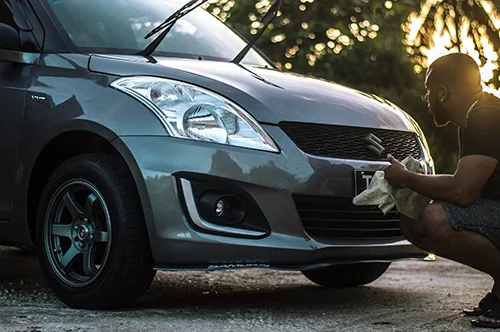
Let's be honest - how long has it been since you got to enjoy the feeling of a clean car seat?
Most drivers clock an average mileage of 20,000 km per year, which means that the typical driver often spends an hour or two behind the wheel daily. Imagine the hundreds of times your car doors have opened, windows been rolled down, and sweaty passengers being carried… nasty, isn’t it?
That’s why cleaning your car interior is crucial in maintaining cleanliness and value. Though it won’t bring back the feeling of a brand-new car seat, it does a good job of improving the air quality and hygiene of your car. Plus, you’re able to save hundreds of dollars on professional detailing by doing it yourself!
How Often Should I Clean My Car Interior?The frequency and intensity of cleaning a car’s interior differ from driver to driver –– rather, it’s dependent on your driving conditions, how frequently you drive, the number of passengers you carry, and how the vehicle is used.
Here’s what you’ll need: a trash bag, dishwashing liquid, disinfecting wipes, paper towel, water, ammonia-free window cleaner or distilled white vinegar, and baking soda. Alternatively, you may want to consider purchasing oxygen-based bleach, upholstery cleaner, or a leather cleaner for a cleaner job. You’ll also need to have these tools on hand: a bucket, duster, old toothbrush, sponge, cotton swab, microfiber cloths, a vacuum with hose attachments, and a garden hose (optional). Sometimes you’ll find it easier to just replace certain parts, like car mats. If that happens, just get a new one at Simply Car Mats. With that being said, let’s break down the different procedures to clean a car’s interior.
Step-By-Step ProcedureBefore attempting to clean your car interior, you should begin by gathering all your rubbish from the cup holders, floorboards, and door and seat pockets. Do remember to remove all additional items left behind in the car –– such as toys, gym bags, car seats, water bottles. If you’re planning on disposing of the rubbish, remember to bring a garbage bag in advance. Remember to don the appropriate safety gear; you don’t want to get your hands unnecessarily dirty, especially if you’re dealing with unpleasant garbage! Additionally, do consider bringing a recycling container along, where you can sort and place all recyclables –– such as cardboard items, plastic bottles, and paper –– into a separate section for recycling.
The floor mats are undoubtedly one of the messiest components of the car and accumulate the most dirt. Before you begin vacuuming, you should remove the floor mats and shake it out to help reveal the grime underneath. Different floor mats would require different forms of cleaning techniques; for example, carpeted mats would need a carpet or upholstery cleaner, whereas rubber, vinyl, or silicone mats only require a good hosing down. This includes creating a soapy water combination of a few drops of dishwashing liquid and warm water, and dip a scrub brush to clean the silicone or rubber mats. Once you’re done washing the mats, leave them out to air-dry before placing them back into the vehicle. Check out our guide to cleaning your car mats for more advice and tips.
Wet a microfiber towel lightly with an ammonia-free window cleaner to get rid of the haze from interior windows. It’s important to use a microfibre towel, as they are specially designed to remove tough stains whilst avoiding streaking. Additionally, choosing an ammonia-free window cleaner is important as ammonia could potentially dry out the plastic in your vehicle and damage the windows.
Start by lowering your windows and cleaning from the top to bottom systematically, to double-check the label of the cleaning product to make sure that it is safe to use.
The center console is often used to hold cup holders, which results in it getting messy and dirty easily. Soak the cup holder in warm water and dishwashing liquid to remove stains, and rinse it with fresh water after. To finish, dry it with a cloth and reassemble the console.
When cleaning the joystick and controls, dampen a clean microfiber cloth slightly with a household cleaner, and work from the cleanest areas to the dirtiest –– for example, you can start with the centre console, before working your way to the gearstick. Hint: use an old toothbrush or damp cotton swab to reach every nook and cranny!
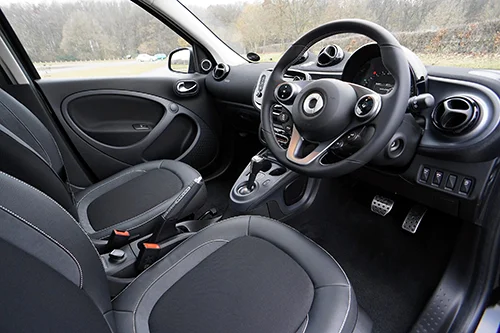
One trick is to use a duster to remove the majority of the dirt from the dashboard, and use cotton swabs to reach the tight spaces around the vents and knobs. Similarly, use a damp microfiber cloth with a household cleaner to wipe down the door panels, and make sure to not leave residue behind. In both cases, it’s good to repeat the cleaning process by going over the cleaned areas with another damp, clean microfiber –– this helps to pick up any residual grime and remove fingerprints.
Use a clean microfiber cloth or disinfecting wipes to wipe down the steering wheel and gear shift knobs. If you have trouble removing stains, consider switching to cotton buds to reach tight corners. It’s important to change to a clean cloth every once in a while, as you might be transmitting the mess you’ve cleaned up to the next person.
Your cleaning method is dependent on the texture of your car seat, as different materials require specific forms of care. For example, to avoid cracking, leather car seats require a vacuum crevice tool and an appropriate cleaner (eg. saddle soap) to remove dust and grime. Alternatively, you can consider conditioning the seats to restore its shine and suppleness.
To clean heavily-stained cloth car seats, you’ll need to have an appropriate upholstery cleaner or know specific strain treatment methods. Dye-based stains, such as Kool-Aid, can be removed by a combination of water and oxygen-based bleach. Rub the paste into the stained area and leave it for an hour –– the stains should be (almost) fully removed! After removing all the stains, use a scrub brush to apply cleaner to the fabric, and wipe it again with a damp microfiber cloth.
Don’t forget to clean your seat belts as well! Wipe the fabric straps with an upholstery cleaner to remove external dirt, and use a microfiber cloth to clean the metal fasteners and molded clasps.
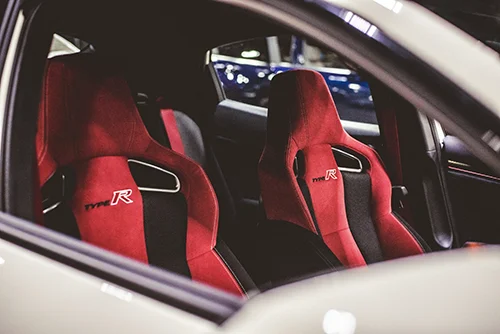
We’re almost there, so hang on! Make sure that you all have the required items: upholstery nozzle, crevice vacuum cleaner tool, and a dusting brush. Each part of the car would require using different cleaning technologies –– for example, upholstered areas (eg. ceiling, seats) require the upholstery nozzle. By saving this to the last, we’re able to focus on getting rid of all the debris from the previous tasks. However, if there are large stains prevalent on the carpet, we can begin by searching where the commercial carpet cleaner is advised.
Did you know that you’re able to control odours, just by combining baking soda and activities charcoal in a sealed plastic container? You’ll only need to change the containers monthly, and ensure that there are slits in the lid, and place it below the seats. Otherwise, you can opt to sprinkle the car seats and carpet with dry baking soda to get rid of any stale or stuffy odour. Let these substances sit in the car overnight before vacuuming it away; you’ll soon observe a big change in terms of odour!
ConclusionFor regular drivers, a good clean every six to eight months is sufficient enough to maintain the ‘new’ look and feel of a vehicle. However, first-timers should beware –– be prepared to take a significantly longer time, especially if it has not been cleaned in a while.
One man’s car is another man’s scenery, hence having regular vehicle maintenance can help to increase its resale value by hundreds and thousands of extra dollars in the future.
Do I Need To Replace My Car Mats? Help 07-Feb-2021 When To Replace Your Car Mats
Despite its humble appearance, the car mat plays an important role in protecting the vehicle’s floor from the dangers of dirt, wear, and corrosion -– this helps to maintain the hygiene and cleanliness of a car. However, because these mats are used daily, they often get worn down easily and needs to be replaced over time. The good news? With proper care, you’ll be able to spot when to replace your car mats to keep the vehicle in tip-top shape.
Signs To Look Out ForOnce your mat hits the one-year mark, it’s time to begin looking for signs of ageing. Most rubber mats have a one-year usage lifespan, especially if they’ve been heavily used on a daily basis. Hence, car owners with mats that have been used for a one year or more should pay special attention to the following telltale signs, which would help to indicate when a mat is due for replacement.
Unsightly physical appearances are one of the first telltale signs if a mat needs replacement or not. Do take note that not all negative physical appearances require immediate replacement; some appearances such as faded colours and fraying could simply serve as a good gauge as to how much time the mat has left.
However, certain physical appearances such as the appearance of mould can serve as warnings for immediate replacement. This is especially dangerous as mould releases spores that may trigger allergic and asthmatic reactions, such as wheezing and shortness of breath, to the driver and passengers. Such complications may further develop in passengers who are especially prone to respiratory illnesses, or who are of old age.
To a certain extent, all car mats are equipped with anti-slippery mechanisms, as traction is essential in providing the driver with a firm and stable ground when driving. A car mat that has begun to slip around indicates that either the rubber backing has begun to wear off, the eyelet has broken off or the hook has begun to pull on the carpet. This may pose a potential hindrance to the brake and accelerator, which may cause the driver to lose control of his vehicle when driving. Additionally, having slippery mats run the risk of exposing the carpet lining underneath to dirt, grime and physical damage that is supposed to be covered by the mat.

If you’ve ever purchased a universal car mat, you’ve probably encountered certain mats that are unable to cover the carpet area fully. Similar to having slippery or mats with holes, car mats that are too small exposes the carpet lining underneath to external dirt, grime and liquid spillage. This is not ideal, as carpet linings are way more troublesome and costly to replace.
Car mats are designed to provide a stable surface for the vehicle owners by gripping tightly onto the carpet lining –– hence, mats with curled or lifted edges is another clear indicator of wear and tear. Similar to slippery car mats, mats who have begun to lift could interfere with the driver’s momentum, which may result in a momentary loss of control over the brake and accelerator pedals. Plus, if your floor mats have begun scrunching up together, it probably means that that mat does not fit the car interior well or has lost its durability.
If your floor mat has significant holes in it, it’s probably about time to get rid of it. Car mats are supposed to protect your car’s carpet lining from physical damage, as carpet linings are often trickier and harder to replace than car mats. Additionally, because the flooring contains multiple electrical wirings, having a hole in the car mat could potentially expose your car to unprecedented danger.
Furthermore, these holes could pose an interference in driving. Most drivers pivot on their heels when switching between brake and gas pedals, hence a hole may cause their heel to be stuck by accident. This may also result in a loss of control, which could put the lives of both the driver and passenger in danger.
Another telltale sign of wear and tear is if bad odours have begun to develop from the mat. Foul odours are usually linked to things going bad, such as decay, the presence of mould, or the overheating of the catalytic converter. Regardless of the reason, you should probably change your car mat immediately once it begins to stink. Prolonging it would cause the foul smell to linger in your car, which could potentially invite the presence of pests (such as cockroaches, ants, etc). No one wants their car to smell bad, right?
Car mats are primarily used to protect the carpet lining from physical damage. If you’ve begun to notice dirt and grime trapped at the bottom of the mat, or on the surface of the carpet lining, your car mat is no longer effective and useful as it is supposed to be. Additionally, as wear and tear begin to set in, so does the accumulation and hardening of dirt and grime. Spending more time and effort in cleaning the car mats is another indicator that your car mats are no longer as useful as they once were.
A little can go a long way! Changing your car mat or adding car accessories are great and inexpensive ways to spruce up the look of your car interior. The look and feel of a fresh car mat are bound to give your long driving trips a good refresher, too.
Furthermore, this is a great tip for anyone who is looking to sell their car soon. First impressions are especially crucial for the car market, hence you’d want to make your car as presentable as possible before putting it up for sale. Purchasing a new car mat can help sharpen the look of your vehicle, giving it a new and stylish look that’s bound to send any potential car buyers your way.
ConclusionOnce you’ve spotted any signs of wear and tear, don’t hesitate to change your car mat immediately –– prevention is always better than a cure! Educate yourself and practise proper car maintenance regularly, and you’re guaranteed to be protected from the dangers of overwork and improper car mats.
Cleaning Your Car Floor Mats Help 05-Feb-2021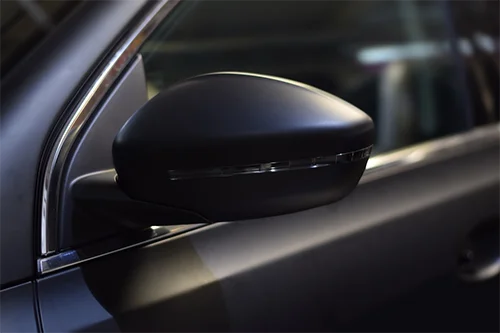 Introduction
Introduction
To all car owners out there: we know that cleaning the floor mats of your car can be a chore, time-consuming and tiresome job. We also know that you probably have put off cleaning your Car Mats for as long as you can. We are here to share our not-so-secret but definitely useful guide for more efficient and easy cleaning of your car floor mats. So let’s get cracking! Before you know it, your car will be as good as brand new, enhancing your overall driving and car experience. Don’t think that this a thankless job—future you will definitely be thankful for your hard work put in to clean your car. Okay enough talk, let’s jump right in!
To start off, you have to remove the floor mats that are to be cleaned. Car floor mats can be made of different materials such as rubber, cloth, and even upholstery. Regardless of the type of material they are made of, we highly recommend removing them from your car for an easier time cleaning them. To do this, you have to open all your car doors and manually remove each mat one at a time. Although you can technically clean them inside the car, any form of cleaning that can be done would be very minimal and surface level. If you involve liquids in an attempt to deep clean them, you risk damaging your car’s interior and mechanism. Therefore, we discourage anyone from doing so, especially if they are not car experts. The only exception is mats that are entirely unremovable. Ensure that you do not let any oily or foamy substance on the gas, clutch, and brake pedals while doing so, as you may cause an accident for future you while driving.
For the actual cleaning, we recommend a strong vacuum. Vacuum the mats thoroughly, ensure that the vacuum sucks up all visible dust and dirt particles. Remember to do so for both sides as these can particles can be persistent and be hidden on the other side. You can use vacuums of any size, but we recommend a large one for the removable mats for a quicker job. For mats that cannot be detached, you will have to stick to the portable and handheld versions. It is best to do this in a brightly lit area so you can inspect the floor mats for any stray dust or dirt particles that you might have missed before you have on to the next course of action. Should your floor mats be wet for some reason, vacuuming will become quite tough. Consider sprinkling some baking soda on the damp mat. This will help to remove the moisture and foul odour if you leave it alone for about twenty minutes. After this, you can proceed to vacuum as directed above.
Up next is give them a good smack and whacking for the floor mats. This will help to get rid of the hidden dirt stuck in between the seams of the mats. You can whack it against the ground or any solid surface.
Washing Floor Mats of Rubber MaterialsUse a hose with decent pressure. Wash off the dirt on the rubber mat and ensure the flipside remains dry. The pressure from the hose is going to come in handy to flush off any loose particles on the mat.
A side note that is unrelated to cleaning is to invest in quality rubber car floor mats. Sturdier and durable rubber mats are less likely to have any wear and tear even after years. We want to avoid wear and tear because any liquid that gets past your mat and to the car floor can spell trouble for your car’s floor. Once your car floor rots due to the moisture, your car will start to have a persistent bad smell that can only be gotten rid of by removing the car interior floor altogether. Another alternative is to head to your nearest car wash and pressure wash your rubber mat if you do not own a hose.
The next thing you want to do is to prepare the soap mix. Simply mix some baking soda and laundry soap with water. Apply this soap mix to your mat and rinse them off with water from the hose.
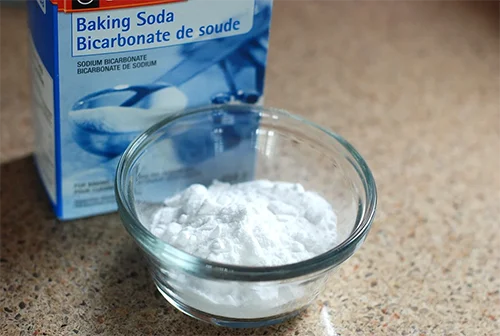
Finally, leave the rubber mat to dry. For the mats stuck in your car, turn your air condition and fan on, and toggle them to full heat and max strength respectively. To bring the drying speed up a notch, consider turning on your feet warming if your car has that option.
Washing Floor Mats of Cloth MaterialsShould your upholstered car floor mats have persistent stains, you can get rid of them by rubbing baking soda on the spots affected. For tough stains, you might have to use a brush to scrub them off using the bristles. For this, you want tough and hard bristles if possible.
For cloth mats, the soap mix can be made with two tablespoons of washing powder and an equal amount of any shampoo. Wet your brush with this mixture and rub this mixture on your mat. This mixture can be used to clean other parts of your car’s interior as well. Rinse off with warm water once you are done scrubbing.
If you have a spray cleaner, you can use it and leave it to sit for half an hour. Spray cleaners can be found for sale at most auto shops. Once thirty minutes have passed, you can use a brush to make sure the spray cleaner is spread throughout the mat.
Another easy option is to toss them into a power washer or steam cleaner. Remember to apply stain removers on stains you have spotted on the mats, before throwing them into the machine with regular detergent.
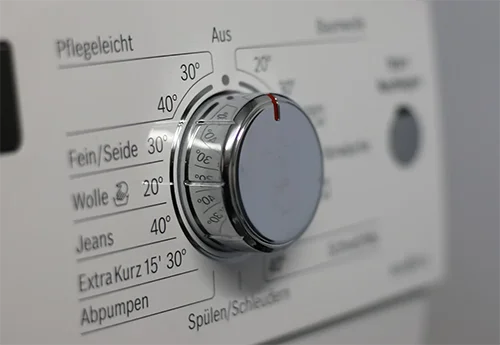
At this point, you can either vacuum them again to speed up the drying process and remove any excess dirt you may have missed. Otherwise, it’s time to dry them in a well-ventilated spot. It is best to hang them to ensure they dry properly. You can choose to dry them in the dryer as well. Consider using a clean scent spray of your choice to ensure they smell nice.
ConclusionWell, that’s it. That was not as hard as you think it’d be right? If you are still hesitant to clean your mat, just know that once you get started you’ll be done with them in no time. Happy cleaning!
Basic Tips For Boot Liners And 10 Best Boot Protectors For Dogs Info 03-Feb-2021 Introduction
If you are new to the car accessories world, Car boot Liners are essentially a basic item you need when you first get your car. You do not need to pay special attention when choosing one but going for the most suitable one right off the bat can save you monetarily, and can do a better job at protecting your car in the long run.
Next, we will be going through what makes a decent boot liner.
1. Material & ConstructionTo understand the basic function of boot liners, they are there to help protect the carpet in your car boot, as well as the loots you are carrying. Without an adequate boot liner, your boot liner may not hold its shape when heavy cargo is transported into the car. Therefore, a decent boot liner will need to be manufactured using a strong and durable material. Examples are rubber and or high-level plastics such as TPE. Having a strong boot liner can also prevent any spillage when you are taking it out to clean.
It should also be versatile enough such that you can roll it up and fit it into a smaller storage space when not in use.
2. FeaturesFeatures that make a befitting boot liner includes having a good grip, which prevents cargo from slipping and clanking around the boot when your car makes sharp turns. The best kind of boot liner warrants you a hundred per cent anti-slip surface. When choosing boot liners, keep a lookout for those with a slightly tilted edge as they will hold spills better. You can also take it a step further and go for a liner that is entirely resistant to chemical and or fuel spills. A boot liner should lastly be UV resistant, as this will protect the car when it is left under direct sunlight for a long time.
3. Fitting & InstallationIt is best to get a liner that fits your vehicle’s dimensions just nicely. Tailor boot liners are ultimately constructed to follow the outline of your car boot and this will give a 100% snug fit. Installation for such boot liners simply includes rolling the boot liner in the car boot. Do take note to go for the least complicated liner, as complications will only drag out the installation process.
4. WarrantyAs with all products, having a warranty on any product means that the item is of good quality. Boot liners that typically come with a two-year warranty are the ones you should look for. For additional assurance, boot liners can be warrantied up to 10 years. The longer the warranty is, the more worth the liner is.
Next, we will be moving onto the top 10 boot protectors for dog lovers with pets.
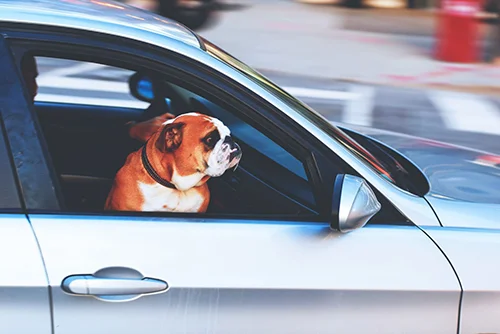 1. Bishopstone Pets Car Boot Liner
1. Bishopstone Pets Car Boot Liner
This car boot with a padded cover suits the typical SUV and small pickups. Besides featuring a long bumper protector that helps to shield dog scratches, it is also secured together firmly by velcro strips. The durable and lightweight aspect of this car boot is the highlight, whereby it makes for easy installation and removal.
2. Zellar Car Boot LinerA bonus regarding the Zellar is that rather than being generic and fitting every type of car available, it is produced in a variety of four sizes to best suit your car dimensions. It clips to the car near the rear headrests and provides comfort with its moisture-resistant fabric. it also comes with an 18-month warranty to alleviate your worries about quality.
3. Digiflex Water Resistant Car Boot LinerWhen it comes to affordability, this one takes the cake. Featuring one of the most reasonably-priced boot liners in the industry, this boot liner does its job decently with minimum flair. It is easily available in one size and made from a strong and waterproof material. It also includes an extra flap that can provide extra protection to the rear bumper.
4. Me & My Pet Car Boot Protector MatThis particular product has gathered high ratings from consumers and just by looking at the design, it is not a surprise why it is so highly raved. Rather than showcasing the glossy waterproof material most boot liners will feature, this one has more of a carpet-like feel to it. However, it is guaranteed to be equally resistant to dirt and simple to clean too.
5. Sakura FERSS4612 Boot Liner and Bumper ProtectorThis boot liner acts as a simultaneous bumper protector with the remaining part of the material. Featuring the common traits of a water-resistant liner, it hinders your bumper from getting wet and dirty paws all over it.
6. WEIJIGUOJI car boot linerDespite the hard to pronounce name, this boot liner has made a name for itself when it comes to the basic functions of a boot liner. This liner also comes with adjustable straps such that it can fit an array of vehicles well enough. It also comes with a pet-friendly clip to ensure your pet travels safely and securely while seated in the boot.
7. Pettom Water Resistant Car Boot LinerPettom’s boot liner has been upgraded to give your vehicle only the highest level of protection. Made from a material plush and durable enough, it features a non-slip surface beneath, which prevents movement within the cargo area. There is also an excessive flap of material that can double up as a bumper protector when on the go.
8. Focuspet Dog Car Seat CoverEven though the name suggests that it is solely a car seat cover for dogs, this product is essentially manufactured to protect your car boot in many ways. Made of the typical Oxford fabric, this car seat presents waterproof functions as well as a non-slip backside to secure it in place. As a bonus, it is smartly created to operate even with all the backseats folded, for maximum dog-carrying storage.
9. LIVIO boot liner and rear seat protectorA cheap and aesthetically pleasing product featuring blue trimming, this product works best with larger cars. For easy keeping, it can also be conveniently rolled up and you are getting a product worth the money.
10. Hardcastle Water Resistant Heavy Duty Car Boot LinerLast but not least, we have another multi-purposeful boot liner specially manufactured for dog lovers. This item is also made of the popular Oxford fabric but adds on fancier knick-knacks in its installation. Security is one thing it measures up to as it comes with zips, ties, and velcro fastenings.
 Conclusion
Conclusion
For all dog lovers out there, you will be pleased to find that you can now bring your dog everywhere with you without worrying much about the aftermath. For first-time car owners, hopefully, you have gained some useful knowledge on what a boot liner does and why it is an essential purchase.